




The right music and food can make any moment magical
Welcome to the East & Beats test kitchen with Chef Emily Zhuang. In this issue, she uses the Thai yellow curry spice mix from our friends at The Spice Trader See the delicious dish she made & get the recipe
Hard to believe that ‘Hey Jude’ turns 55 this month We take a deeper dive into one of the most beloved Beatles songs
COVER VERSION
39 66
WINE OF THE MONTH
In the August issue, we pour a glass of Maison NO 9, a grenache-based rosé from Hip hop superstar Post Malone
As the Toronto Caribbean Carnival heads into its 56th year, we take a look at the history of what some still call ‘Caribana ’
76
HANDHELD, DELIVERED, I’M YOURS
August is National Sandwich Month, so we share the story of the sandwich & some of the most fave sammies from around the globe
In this new feature, we look at some interesting copycat recipes of restaurant classics Have you tried the latest viral TikTok sensation, the Big Mac smash taco?
57 GET GLOBAL / EAT LOCAL
This is another new feature where we showcase local Canadian restaurants that offer delicious international cuisine. In this issue, we look at the Trinidadian restaurant TNT Tabanca in London, Ont.
80 IN THE AIR FRYER TONIGHT
82
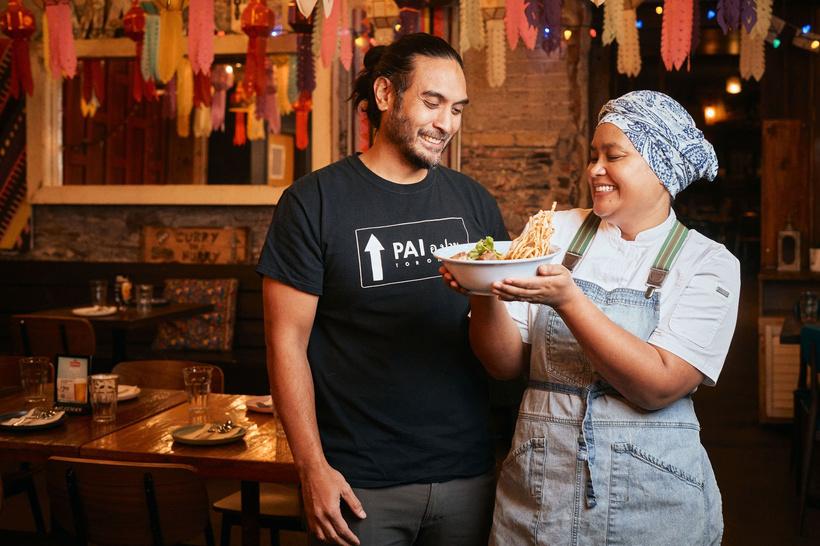


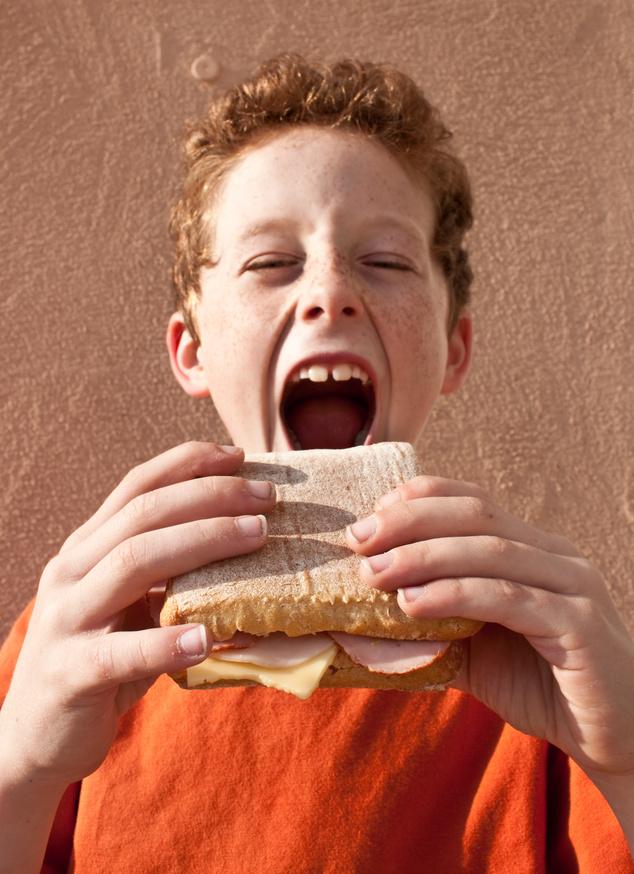




The beginnings of my culinary journey.
This issue is very special to me, not only because of our cover story and the truly fantastic culinary love story of Chef Nuit and Jeff Regular about their journey together from Thailand to Toronto, as well as, a look at the history of Caribana (will always be Caribana to me) and more great articles and recipes and local love for Thai and Caribbean food, but also because these were two of my first and favourite cuisine discoveries.
Growing up in Scarborough in the 70s wasn’t exactly the most exciting times for food. Don’t get me wrong, I loved my mom and dad’s cooking but the most international food discoveries for me were going to a hut to get pizza and Kentucky for fried chicken. There was also of course what was probably the most international food of my youth, Canadian Chinese cuisine with those beloved breaded chicken balls, jumbo breaded shrimp and that glowing sweet & sour sauce. It wasn’t until my late teens when my sister took me to a small Malaysian restaurant on Bayview Avenue and took me on my first real culinary journey. When I walked into the restaurant…the aroma, the decor and the music (which has always been important to me) truly transported me thousands of kilometers away. This was where I had my first big bowl of Pad Thai! Flavours I had never tasted before and in such a wonderful little restaurant, my life would never be the same. One of my next food discoveries was Roti and Pholourie from a little restaurant at McCowan & Eglinton called Roland’s which would be the place to get my Roti fix in the years that followed.
Following that, many new food discoveries would follow and still continue today. Nothing brings me more joy than discovering a new dish or cuisine that has eluded me all these years. The one thing I love about Toronto today, is the cultural diversity of the city and the ability to explore exciting new global cuisines and cultures in our own backyard.
100% of net profits will be given t ood Bank to help those with food insecurities.

I hope you enjoy this issue




Chef Nuit Regular is the Executive Chef and Co-Owner of PAI, Kiin, Chaiyo, By Chef
Nuit,and Sukhothai, as well as the Executive Chef of Selva. Chef Nuit and her husband and business partner, Jeff Regular, have transformed the Thai food scene in Toronto through the distinct flavours of Northern Thai cuisine and hospitality. It all began when they opened the humble Curry Shack in the small town of Pai, in Northern Thailand. Chef Nuit made the decision to leave her career as a nurse so that she could share her passion and life experiences through family recipes, street market dishes and Royal Thai cuisine in Canada.
The first Thai SELECT Ambassador for Canada, Chef Nuit has been recognized by the government of Thailand for the authenticity of her Thai cooking and was awarded the prestigious Thai SELECT Signature designation for her restaurants. She has been named a WX Network’s 2022 Top 100 Powerful Women in Canada with the BMO Entrepreneurs Award, and is the recipient of the 2022 American Express Award for Business Leadership. She has been a guest judge on MasterChef Canada and Top Chef Canada, Season 9, appeared on Big Food Bucket List, and is a resident judge on Food Network Canada's Wall of Chefs. Her debut cookbook, Kiin: Recipes and Stories from Northern Thailand, won a 2021 IACP Cookbook Award and a Taste Canada Gold Award.
Their flagship restaurant PAI brings the magic of northern Thailand to Toronto with Chef Nuit’s authentic northern Thai cuisine and a warm, inviting atmosphere. PAI is a MICHELIN Guide Recommended Restaurant and has been named Toronto Star’s Best Thai Restaurant in Toronto (Diamond Winner, 2020-2022). Follow them on Instagram @chefnuitregular and @paitoronto.

“Your mom, the aunts and the markets.”
Q. Reading your fantastic Cookbook ‘Kiin,’ it seems you had many cooks in your family that you watched and were inspired by at a young age. I was wondering if you could share the importance of these lessons as you look back now. I’m also curious about the role the markets played in your love for food as a child?
CN. There are some things that your family passes down to you that you don't always appreciate at the time, but now that I'm older and I look back on those moments and the lessons I was taught, I am very grateful for them. Sometimes you can't escape family obligations, so it's important to be open to learning and to go with the flow. You may not necessarily want to learn it at the time, but be open-minded and listen to what the universe gives to you. I used to hate being in the kitchen—all I wanted to do was play outside with my friends. But without the knowledge and discipline that my mom and my aunts taught and instilled in me, I wouldn't have the career that I have today.
I was just a very curious child and when I accompanied my mom to the wet markets, the food stalls were the only other things that were open at that time so early in the morning. I just remember I was drawn in by all the delicious aromas from the food stalls, and it felt like a theatre show just watching the vendors make their food. It was a one-man show conducting on a stage and the food that they made smelled so good to me. It was so magical to me, and that was what particularly drew me to these food stalls at the market.

“A motorbike, crunching leaves, a crackling fire and ‘chop chop chop.’”
Q. The five senses have a powerful way of transporting us to cherished memories and places from the past. I am curious if there is one sound, one scent, one touch, one taste or one vision that immediately takes you back to Pai?

CN. The sight of mist or fog in the treetops and the mountains really brings me back to PAI. And the sound of motorbikes. There are so many motorbikes in the street of PAI.
“A yoke, the wood, the buckets and the long journey for water.”
Q. You often refer to the ‘importance of ingredients’ to your family in your book ‘Kiin.’ I am specifically curious about your one aunt’s insistence to send you on that long and treacherous journey to the springs…Can you share why this water was so important to your aunt? Did the water taste as pure as it sounded?
CN. This spring water was very important to my aunt because it was the most pure water we could find. Rather than dig a well and create a closer source of water, my aunt wanted to get the water straight from nature. There is something magical knowing your water came from the river bank, and it made the water extra special knowing we were using the best water we could find in the village. It also taught me that I shouldn't settle for anything less than the best, which is why I always put so much care and attention into selecting the best and freshest products for my food. The water tasted very clean. Because it is spring water, it has a high pH and is very smooth. I just remember it was very cold and very refreshing.

“Frozen treats, sticky rice, fiddleheads and pad thai in a bag.”
Q. From a young age you learned how to be an entrepreneur. Can you tell our readers your story about selling the above in the streets, the markets and at school, that shaped who you are today?
CN. I was always entrepreneurial from a very young age. We didn't have a lot of money growing up and seeing how my mom worked so hard for the family, I naturally wanted to find ways to earn some extra money to help out my mom, but also have a bit of extra spending money for myself.
My friends and cousins and I used to forage the fields and jungles for things to eat. I was probably around 7 years old when I thought up the idea of picking fiddleheads and selling them at our local morning market. It didn't earn me a lot enough to buy some noodles at the market and bring home a bit of extra cash to my mom, but it gave me a taste of fulfilment and success that drove me to bigger plans when I was a teenager.
In high school, I had found a new customer base my classmates. I used to bring a box of coconut sweet sticky rice to school and sold them to my classmates. At the end of the day, my box was empty and my pocket was full of cash. One of my teachers saw what I was doing and encouraged my entrepreneurial endeavours and helped me to make more money with Pad Thai. The Pad Thai was so successful that I went to our school principal with a business proposal to officially sell Pad Thai at school. The school provided me with a table to sell my Pad Thai outside during recess. I was outselling our school cafeteria, and it earned me the nickname “Nuit Pad Thai.” But it's through this endeavour that I learned how to run a business, how to meet customer demand, and how to manage a team—lessons that were definitely useful when I started my own business many years later.
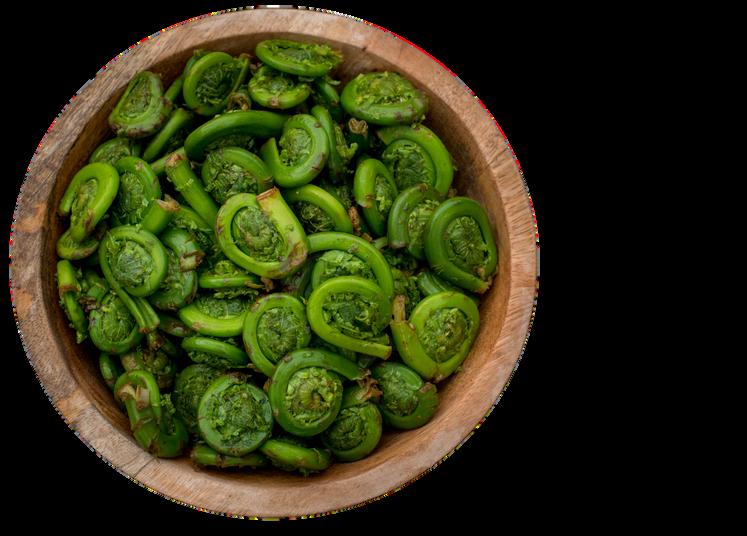

“The story of 2 soups. The one that made you cry & the one that made him smile.”
Q. Reading ‘Kiin,’ the story of these two soups really stood out and reminded me how much impact food can have on your life. I would love to hear more about the story behind these soups, what was that soup you made for Jeff and do you still make any of them today?
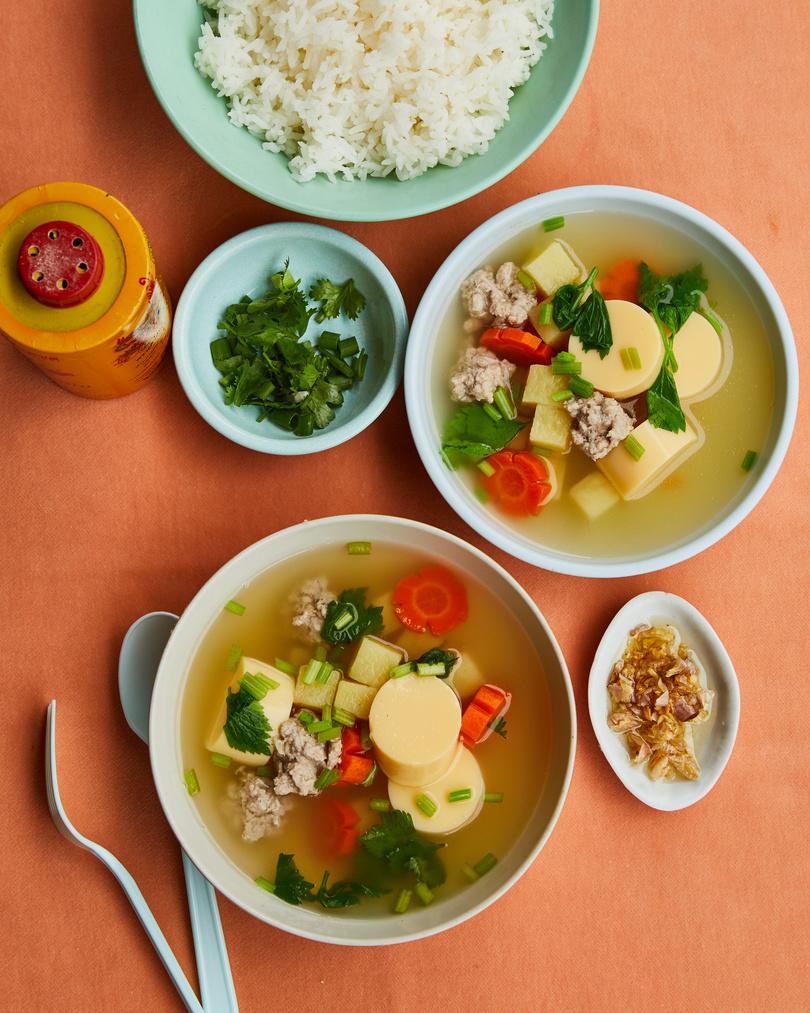
CN. I was a little girl when I was cooking yu choy soup with my aunt. It takes a long time to cook. Kids don't have a lot of patience, and as I kept stirring the pot like my aunt told me to, and the soup kept cooking, I could smell the delicious aromas of the soup and only got hungrier and hungrier. I kept on thinking, “How is this soup not done yet?” So I started to cry because I was so hungry and I kept being tempted by the aromas of the soup! But it taught me that you can't rush cooking and that you need to have patience to make delicious food.
After meeting Jeff for the first time on the elephant, I offered to make him lunch as a thank you for his kindness. I made him Tom Jeud, which is a very simple egg tofu soup. I think he was very surprised that a dish that looks so simple could taste so good, and it left an impression on him.
Yes, I still love making both these soups to this day.

“A smuggled kettle and a forbidden mango salad.”
Q. I loved reading about the culinary rebellion when you were in nursing school. Can you tell our readers about the cooking adventures with you and your friends?
CN. I was a nurse back in Thailand and nursing school was quite a strict environment. There were a lot of rules we had to follow, especially in the dorms. One of those rules was that we weren't allowed to cook in our rooms, or even boil water with a kettle. But I smuggled a kettle into my room so that I could cook myself instant noodles late at night!
There was also a mango tree that grew near our dorm area, and my friends and I would grab ripe green mangoes from the tree in the middle of the night, sneak into my room, and make mango salad. We called it our “forbidden mango salad.” And then I snuck a clay mortar and pestle into my room so that we could make papaya salad. We snuck around to each dorm room to take orders from our fellow students, because we knew that if they partook in our food, they couldn't tell on us. It brings back so many fun memories—breaking the rules, sneaking around, and bonding with friends over food.


Q. When you moved to Pai, you speak about the freedom of making a dish your way without anyone over your shoulder telling you what to do. That first dish though didn’t turn out the way you were hoping for. Can you share this story and tell us how important this moment was to you?
CN. I think when you're young, it's easy to be over-confident and think you know more than you do. But sometimes it's not about having the confidence to do something. In this case, I learned that practice makes perfect. You have to pay attention to the details and follow instructions. You have to listen and learn from the advice given to you from people who have done it for many years. Cooking, especially Thai cooking, is about the balancing of flavours, and the skill that comes with knowing how to properly balance all the ingredients. It is also about experience, not just knowledge. This was a very important lesson for me.
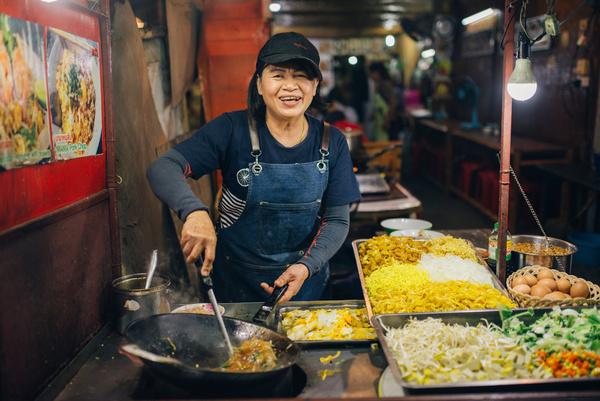
“Listen, learn, practice and balance.”Pai, Thailand

“Pesos to Baht, the Philippines, the last 12 Pesos & the fateful decision to travel to Thailand.”

Q. Jeff, can you tell us about your experience as a Canadian born Filipino living in the Philippines for 4 years and what made you decide to go to Thailand instead of Indonesia?
JR. I loved my experience living in the Philippines. Of course, we totally stuck out amongst the locals. Everyone knew a mile away we weren't from there. They would laugh at my accent when I tried to speak Filipino, but we knew they were always doing it in jest. But it was a great time really getting to experience and better understand my Filipino heritage.
One of my cousins had recommended I go to Indonesia but Thailand had also come up in our conversations as a possible option. But then everyone else I talked to told me to go to Thailand. It was my first time backpacking and there was more of a beaten-path going through Thailand for backpackers, so I felt it would be a safer option for travelling alone. Plus, I liked that it was land-locked to so many other countries so that I could easily and conveniently hop to other places from there (i.e. Laos, Cambodia, Myanmar, Malaysia).

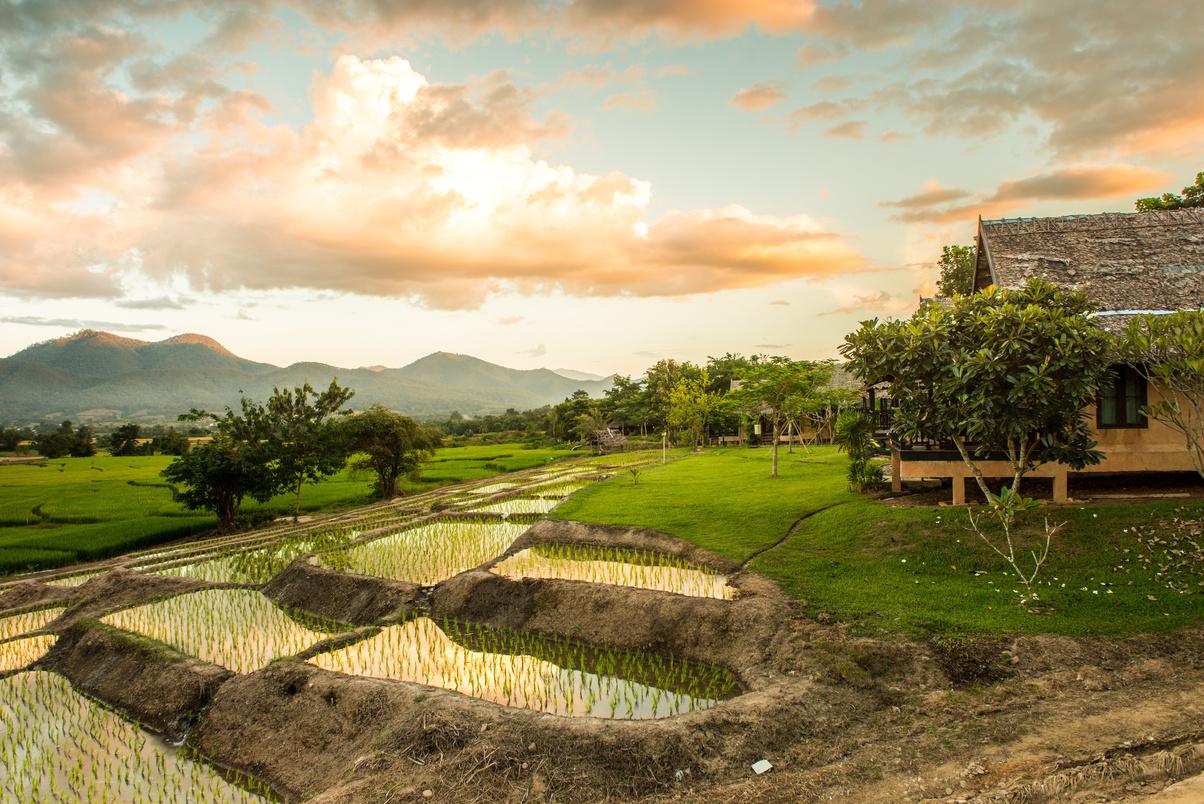
“We both found Pai.”
Q. I found it so interesting how similar you both described your feelings when each of you first arrived in Pai. Can you share what it is was about Pai that spoke to you when you took your first steps off of the bus?
CN. I loved how peaceful it was. And it is so beautiful, being surrounded by forested mountains. There is so much green around you. It's such a slow, relaxed atmosphere in the town. Everyone was so friendly and nice and smiling. It instantly made me think, “Ah! I want to live here and be as happy as these people!”
JR. I remember it being really quiet and peaceful, especially after being in big, touristy areas like Bangkok, Chiang Mai and the beaches. Everyone was just minding their own business and doing their own thing. Nothing was ever pushed on you, whereas you always have hawkers chirping at you in the touristy areas, trying to sell you something. It was just really nice to be able to walk through the town in peace.

“Massaman Curry, Khao Soi and a yellow watermelon.”
Q. Discovering new dishes, spices, ingredients and produce is so exciting. Jeff, can you tell our readers about your food discoveries in Thailand and how you discovered them?

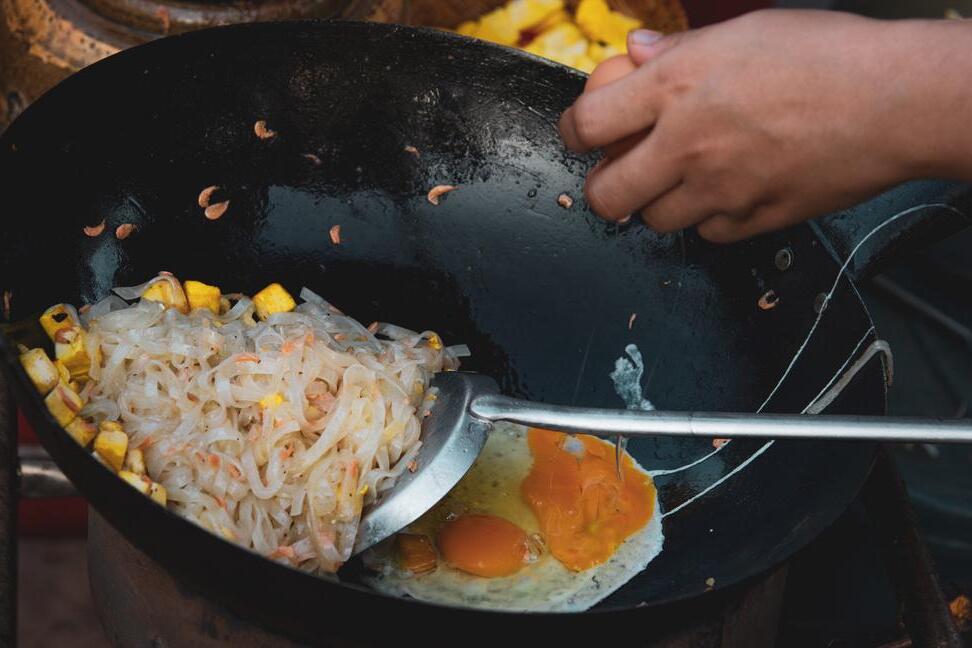
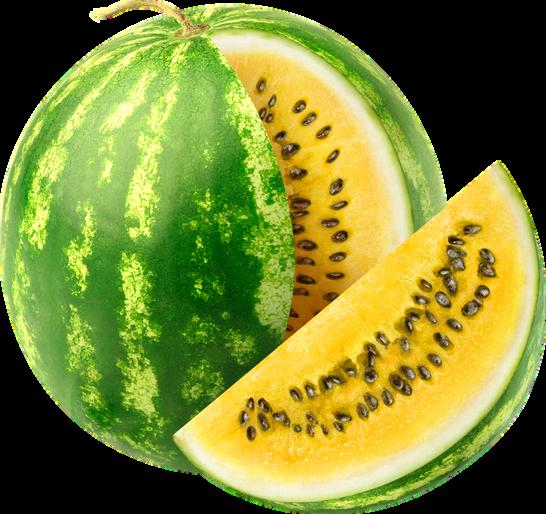
JR. In the beginning, I was on such a tight budget that I was only getting things that cost me less than $1, like street Pad Thai and noodles from the noodle soup shops. As I travelled further through Thailand, I discovered more foods by asking fellow tourists and locals what their favourite dishes were.
That's what led me to Thai markets which people kept telling me I should go check out. Your first time at a Thai market can feel overwhelming but once I got over the intimidation, I explored the different food stalls and found so many amazing dishes on my own. And of course, after meeting Nuit, I happily let her guide me through the rest of the cuisine.

“An elephant, a waterfall and a wedding.” CN. Jeff and I met on the back of an elephant. I had a day off and a friend was visiting from out of town and she wanted me to join her riding an elephant. It was something I had never done before and I was very nervous to be on the back of such a large animal. I remember as we were waiting to get on an elephant, there was another young man there waiting by himself. Since it was cheaper to ride with three people instead of two, we decided to ride together, even though we didn't know him. Neither my friend or I knew much English, but we somehow came to this agreement with this man. That man was Jeff. He was very polite and quiet which helped make me feel comfortable riding with him.
Q. You guys have such a wonderful love story. Can you tell us about meeting at the elephant camp, the story behind the waterfall, and your wedding?
When our turn came, Jeff got on first, with my friend following behind him. I was getting ready to get behind my friend but the guide told me I had to sit at the front. Right at the neck of the elephant, with nothing to hold onto. In front of a stranger. I got so nervous again.
The elephant was very slow and gentle, but I was still very nervous throughout the whole ride. I remember my body swaying from side to side as the elephant moved along, but there were a few moments I thought I was going to fall off the elephant. There was one moment where I suddenly reached back and grabbed Jeff's hand— anything to keep me from falling. He didn't say anything either because he was too surprised or just being polite.

“An elephant, a waterfall and a wedding.”
CN. After we got off the elephant, I felt so bad for crushing this stranger's hand, so my friend and I spent some time showing him around Pai.
A friend's niece and I wanted to go see this waterfall we had heard about, but had no idea where it was. Since Jeff and I had started dating by then, we asked him to come along, as we felt safer having a man come with us. Because we didn't know where it was, we decided to walk along the river, thinking it would eventually lead us to the waterfall. It took four hours, wading through the water and avoiding leeches and snakes! Eventually we reached a small waterfall and Jeff was like, “Wow, this is beautiful!” Except it wasn't the waterfall we were looking for! But rather than complain, Jeff just smiled and continued climbing on and I knew then he must really like me to be willing to continue. We eventually reached the intended waterfall, only to learn from local Thai people that there was a much shorter, drier path to the waterfall! But this experience of finding the waterfall together was such a special moment for us and Jeff eventually took me there again when he proposed using the shorter route, of course!
Our wedding was very simple. I only had 1 week notice. He proposed to me and we decided to get married right away. We didn't want or need the big show and ceremony of a wedding. For us, marriage is about 2 people who decide to spend the rest of their lives together and make a commitment to one another. That's all that mattered to us.




“An elephant, a waterfall and a wedding.” Continued
JR. Exactly. We just wanted to focus the day on the two of us and not worry about tons of people. I told my family and closest friends about it and said whoever could come, great, but there was never any pressure for them to join us. My brother and one of my best friends came along. But our wedding allowed Nuit and I to really just focus on ourselves that day and really be into each other, rather than everything else that goes on during a wedding ceremony.
AN ELEPHANT A WATERFALL


“A shack, coconuts and the best Pad Thai.”
Q. The Curry Shack was the first restaurant that you opened together in Thailand and it sounds like you really loved this place. Can you tell us more about it? Where was it? What was on the menu?
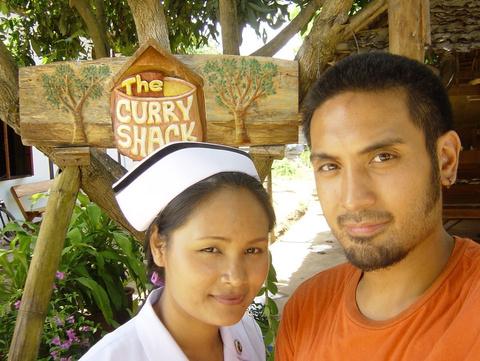
CN. The Curry Shack was in the town of Pai. We opened it as a way for me to support my family and so that I could leave the business behind with them, once I moved to Toronto with Jeff. It was very small and simple. Basically, it was a shack with a roof made from wooden pillars and leaves and no walls. It was an open-air concept restaurant with a few tables and chairs. The Curry Shack was only open in the evening, as I was still working during the days as a nurse. I would work a full shift at the hospital and then come to the restaurant to cook. It was just the two of us—me in the kitchen while Jeff was the server.
The menu only featured curries we had green, red, massaman, yellow and panang. The Curry Shack was also where we came up with the idea of serving green curry in a coconut shell which is how we still serve our green curry at PAI today. We knew a lot of tourists loved curry so we wanted to have one specialty item on the menu that would really draw them in. So we decided to serve our green curry in a coconut shell to make it more unique and special. It was such a special thing for us that we knew we had to make it happen at PAI.

“Packing, a new country, unpacking and the soy sauce.”
Q. I can only imagine how exciting and scary it must have been as you left to start a new life together with Jeff and your son in a new country. What was that journey like for you? What were your first impressions of Canada? How long did it take you to acclimatize to living here?
CN. I always like to start something new. I love the excitement and the adrenaline rush of it. I remember thinking, “What can I do and what can I become in my new home?”
I come from an area in Thailand where there are a lot of trees and jungles so it was very different when I first landed in Canada. I first noticed that the land was very flat because we landed in Mississauga where Pearson Airport was. There were hardly any trees around. The roads were very wide. The stores were huge. I just remember wondering why everything was so big here! I didn't know much about Canada except that it was a big country. But I had visions of lots of nature and I liked reading the Little House on the Prairies and Anne of Green Gables books when I was younger. I imagined it would be something like that being surrounded by nature. Instead, Jeff picked me up from the airport only to drive me to our condo. My house on the prairies turned out to be a condo in the concrete jungle of Toronto! I was so surprised and a little disappointed. I felt like a bee, living in a beehive, so high up!
It didn't take me long to adapt, as I am a very adaptable and flexible person. I just loved soaking up my new surroundings and exploring everything that Toronto had to offer.

“Packing, a new country, unpacking and the soy sauce.”
Q. Today, you can source almost every ingredient locally but 17 years ago was a different story. Can you share this story? Did you find it difficult to find everything you needed back then?
CN. Yes, it was definitely difficult to source products when I first arrived in Toronto in 2006. There weren't as many Thai products readily available in the stores and online shopping wasn't a thing yet. I remember I had sent Jeff out once to buy soy sauce from the Chinese supermarket. He came back with a bottle and I was like, “No, go back.” So he went back and bought another bottle. I still said, “No, this isn't the right one either. Go back.” He eventually brought home one of each bottle that was available in the store but none of them were the right soy sauce that I was looking for. Thai soy sauce is different from Chinese and Japanese soy sauces. Each brand will have different salt levels which can significantly change the taste and flavour of your dishes. I am very particular about my products because I want to use the best ingredients in my dish so it was frustrating at the time that I couldn't find the specific Thai soy sauce that I wanted. I had to find importers who were willing to bring in specific ingredients for me.
Now, there are more varieties available in stores, as general consumers become more knowledgeable and curious about international cuisines. If you can't find them in stores, you can easily go online and order them from elsewhere to have them delivered to you.

“Packing, a new country, unpacking and the soy sauce.”
Q. l am curious if there is any market in Toronto, that in any way, brings you back to the markets in Thailand? Are there still any ingredients today that you can’t source locally?
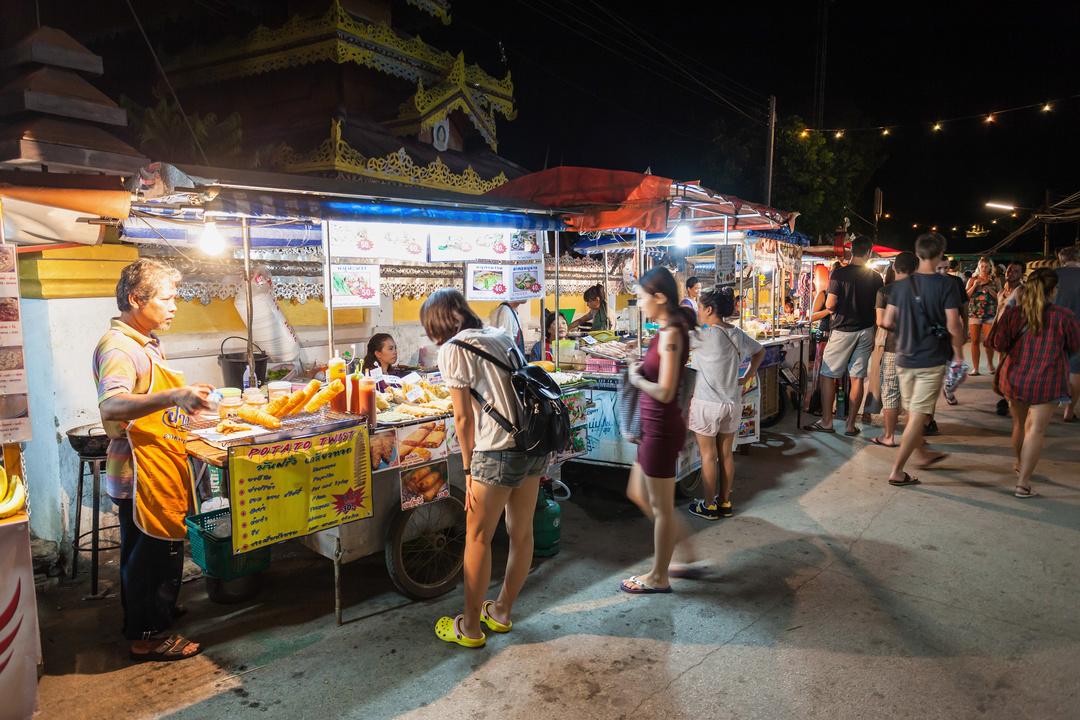
CN. Any farmers’ markets, because they are bringing their freshly harvested produce to the markets. That reminds me a lot of the markets in Thailand with all the fresh fruit and vegetables that they picked earlier that morning.
Yes, there are still certain spices that are specific to the Northern Thai region that I can't source locally. Certain fruits and vegetables, like magrud limes, I have to import from Thailand because they are not grown locally and you can't find them in local Asian supermarkets.
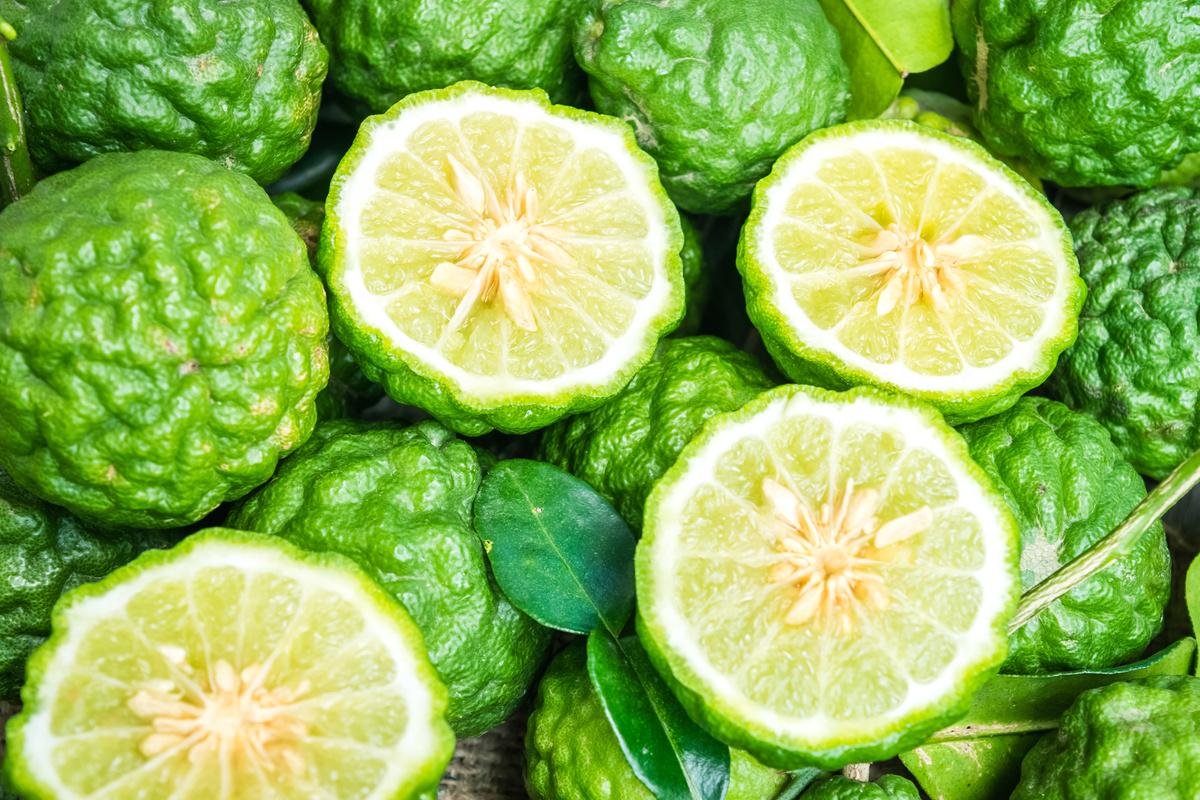

“The first capital of Siam to the first restaurant in Toronto.” CN. When I came to Canada, my intention was to continue my nursing career here. However, my English wasn't so good at the time. I was taking English classes so that I would be able to take the nursing exam here. During this time, we had our daughter Marlee. I wasn't working and I wanted to be able to help the family out financially. My father-in-law owned a building and he suggested that we open a restaurant together. He knew that I could cook Thai food because of The Curry Shack that I had opened with his son back in Thailand. So we decided to open a Thai restaurant which was Sukhothai. That is how Sukhothai started. I thought I would only work at Sukhothai for a year to get it up and running and then go back to focusing on my nursing career.
Q. Can you tell us about the inspiration behind opening your first restaurant together in Toronto and how it came to be?
I was still studying English at this time, in order to pass my Canadian nursing exam. I eventually did pass my nursing exam. But I was at a crossroads by then go back to my nursing career or continue working at Sukhothai. By then, business was picking up. We were getting more customers through wordof-mouth and even getting media attention. Eventually, I decided to focus on a career in the restaurant industry. I wanted the opportunity to work and build something with Jeff and our family.
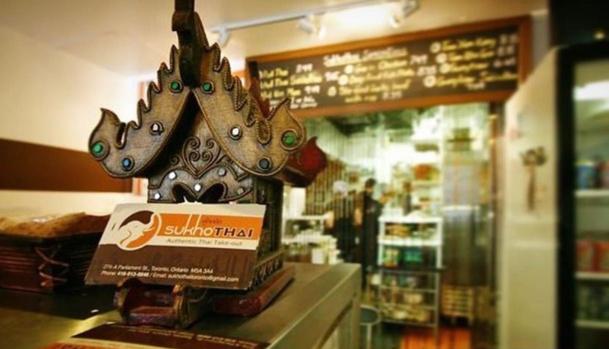

“The first capital of Siam to the first restaurant in Toronto.”
Q. Most people don’t know about the challenges, the sacrifices and struggles of opening and running a restaurant, especially with a young family. Can you share just how challenging it was when you opened Sukhothai?
CN. It was very challenging when we first opened Sukhothai, as we had two young children to take care of. I had just had my youngest daughter so she was still a baby. My original intention with Sukhothai was that I would work a few hours, but still have time to look after my kids and study my English, so I could pass my nursing exam. But the evenings are the most demanding at a restaurant and we were the only ones working there which meant long hours at the restaurant. I am so grateful that we had my mother-in-law to help us out and look after our kids. But it was hard being away from them a lot of the time, especially in the evenings. It limited my time in being able to pick them up from school, help them with their homework, have family dinners together and put them to bed. It also made Jeff and I really appreciate the moments we could spend time together as a whole family, especially in the mornings before we went into the restaurant.
It was also a struggle financially at the beginning. We knew we weren't going to make a profit at the beginning but it's all about managing your losses until you can break even and then start making a profit. Jeff was working as a full-time office worker in the day and would come work in the restaurants in the evening. It was very long hours for him. If you don't have the patience to grind through these difficult times, it could break the family and the business. But luckily we were all very supportive of each other and after the first year of struggles, things started to get better for us as we gained more customers.

“The first capital of Siam to the first restaurant in Toronto.” CN. It was much easier to run The Curry Shack because it was so lowmaintenance. We barely had any rent to pay. It's so easy to set up a restaurant in Thailand—you can just set out some tables and stools, set up a kitchen, get your food and health safety license approved and you're ready to open! Here in Canada, there are so many different rules and regulations to follow—lots of permits and approvals that you need to get. This means you also have much higher overhead costs—you have to pay for the rent of the space, utilities, all those various permits, etc. Also, the costs of ingredients and equipment is much cheaper in Thailand than here in Canada. The financial costs of running a business are so much higher here.
Q. Can you explain the differences behind running The Curry Shack in Thailand to running Sukhothai in Toronto?

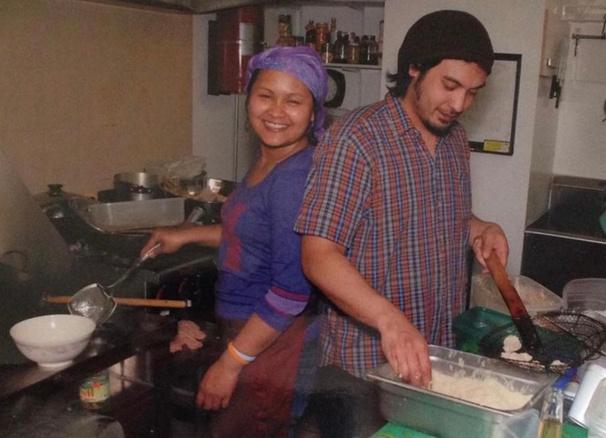

“Filipino, family, diversity, the next generation and a birthday curry.”
Q. Jeff, can you tell me your earliest memory as a child of a Filipino dish and what was the first non-Filipino dish you remember trying?

JR. My earliest memory of a Filipino dish is longganisa and my first non-Filipino dish is pizza.
Q. How important was having your family by your side, as the two of you went along this culinary and life journey together?
JR. Family is incredibly important to us. We wouldn't be where we are today without our family. It's a necessity for us because of our kids. We were so fortunate to have my mom and my brother to watching over our kids while we were working in the restaurant. If we couldn't have our family help take care of our kids, then we definitely wouldn't have done all of this and gone into the restaurant industry, because we knew the long hours it required. We are so grateful for our family's love and support and help over the years.

“Filipino, family, diversity, the next generation and a birthday curry.”
Q. When the two of you are not in the restaurant and at home with your kids, can you tell me what would be: a) The Thai dish you cook/eat the most b) The Filipino dish you cook/eat the most and c) The most popular dish with your family outside of those two?
CN.
a) Kanom Jin (rice noodle soup) and Nam Prik Ong
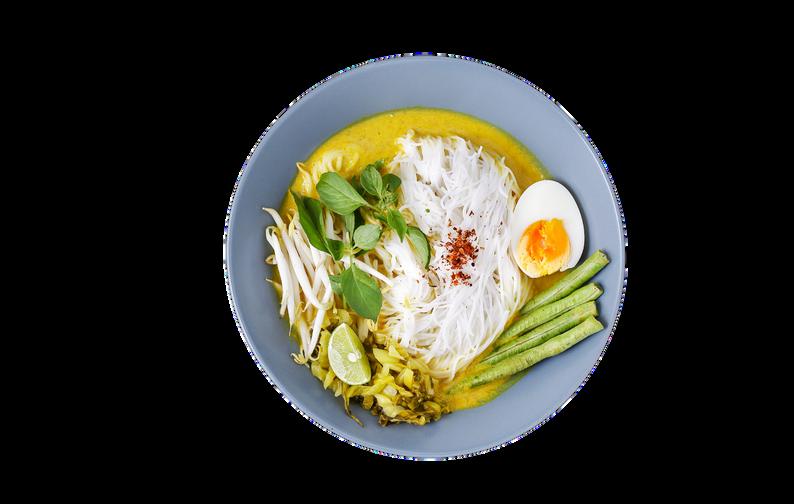
b) Jeff's mom cooks the Filipino food. We will often get back home to find a pot or container of food that she left for us. We probably eat her adobo the most.
c) Korean BBQ
Q. Follow-up on the last question. At this stage of your careers, do you spend a little less time at the restaurants or is Sunday still your only day off?
CN. Our dream is to take a step back and spend more time with family, do a bit more travelling, do more events in our cities and also events with other chefs. We were actually being pretty good about it before the pandemic hit. But the pandemic kind of threw a huge curveball at the whole industry and we've all had to learn to adapt in these last few years. It also means we've opened new projects or had to pivot existing business models which has taken up a lot of our time, energy and attention recently. But we still make it a point to take one or two days off a week to just unwind. We used to take Sundays off but because we now have brunch service at Kiin, we will usually pop in for brunch service in the morning, take the rest of the day off and Monday off as well.

“Filipino, family, diversity, the next generation and a birthday curry.”
Q. Are either of you concerned that the Thai and Filipino culture and traditions, along with the love for the cuisine will be lost in the next generation?
CN. I am a little worried that we will lose some of the culture in the next generation, especially with the language and traditions. Thai culture is very involved in Buddhism but I see those traditions disappearing with my own kids. Here in Canada, we're far away from the temples so they don't have regular access to those traditions and rituals. Kids here also have more freedom to choose their own beliefs and ways of thinking so it's not something that my kids think about a lot, whereas it is very much ingrained in the daily lives of Thai children. So I think in that sense, cultural traditions and language are being distanced or diluted with the next generation.
In terms of cuisine though, I see more of an evolvement with the next generation. What I'm actually seeing is a lot of the new generation kids taking the traditional foods of their parents and ancestors, and adding their own modern spin to them. They are taking ownership of their culture in their own way which I don't think is a bad thing. A lot of my cooking philosophy is about the traditional ways of cooking and traditional recipes. But I think the evolution of a culture is also very much a part of life, especially where we live here in Toronto which is so multicultural. It becomes a combination of their lived experiences, just like my food is reflection of my own lived experiences.
It's one of the reasons that inspired me to write my cookbook, ‘Kiin,’ because I wanted to leave a piece of my culture and my stories and recipes behind for my kids. My kids weren't always interested in learning how to cook Thai food and talk about my Thai culture. I knew I wouldn't be around forever so this allowed me to leave a piece of myself that they can go to whenever they want, at their own time and leisure. It's like a timecapsule of my life, my recipes and my stories that I'm leaving behind for my kids and the next generation.

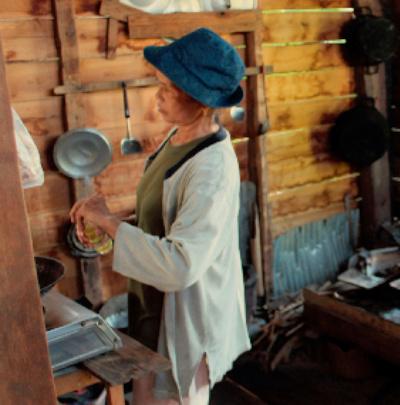
“Filipino, family, diversity, the next generation and a birthday curry.”
Q. Reading ‘Kiin,’ I was really moved by the story behind your birthday curry. Can you share that story, as well as, if you have any similar birthday traditions with your kids?
CN. Ovens aren't really a common object in Thai home kitchens, especially in Northern Thailand, so I didn't grow up with cake on my birthday. Instead, my mom would make a special red curry for me on my birthday, which people in Northern Thailand usually only make for holidays and special occasions. It’s a very special dish because a) it uses coconut milk, which is not as common of an ingredient in Northern Thailand (we don't have many coconut trees in the north compared to other regions of Thailand), and b) it is served with jasmine rice which we don't often eat in the northern region. It was also time consuming because we made everything from scratch, from the coconut milk to the curry paste. It was a very special time for me because I would spend the day cooking with my mom and learning all the tips to make the best curry. At the end I would get to eat her delicious red curry that she made especially for me.
With my kids, we always have dinner together. While I don't specifically cook red curry for their birthdays, I will always cook their favourite dishes.
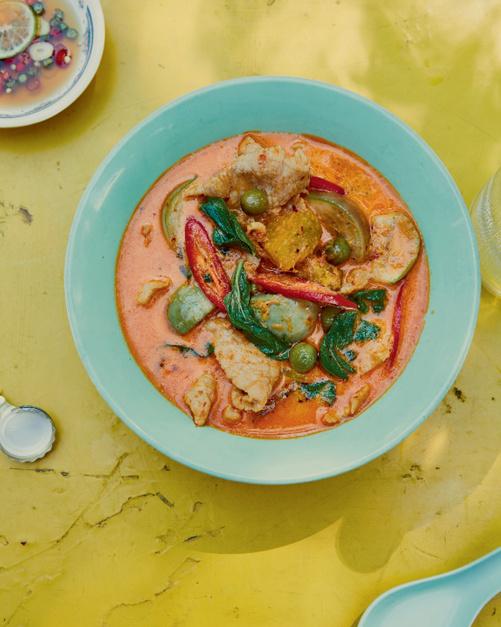

Q. Throughout the years with the openings and closings, the ups and downs, the commitment and sacrifices, you both got to realize your dream of opening Pai. Can you share that journey with us? What Pai means to the both of you? How important is it to have a partner like Janet Zuccarini?
JR. PAI means everything to us. It was a big turning point in our career. Before PAI, we had opened a few other restaurants with different partners, but we never felt like it was ours. To be able to bring a restaurant to life from concept to the real thing, all by yourself, makes it that much more meaningful, and PAI is very special to our hearts. PAI was about what we wanted to do and show to Toronto diners and it was our way to give back to the Toronto community. We wanted to give them a piece of us, because PAI IS us. It's a reflection of who we are and what we want to bring. Our business partner, Janet, has been such an integral part of making this dream come true. We wouldn't have been able to make PAI possible without Janet's support. She and her team took us from a little mom & pop shop and helped educate us on the business side of things, so that we could grow successfully and make PAI what it is today. She brought the corporate structure to our team that we needed without the corporate atmosphere, because we are still very much a family-oriented business. She fully trusts Nuit and I and our vision. We are grateful to her for the freedom that she has given us in creating PAI.

“Paving the road to Pai”Chef Nuit and Jeff with Janet Zuccarini


“Paving the road to Pai”

Q. I know how important the authenticity of food, decor and music is to both of you. When the two of you walk into Pai does it transport you back to your beloved town in Thailand?
JR. Absolutely! That was always the intention of PAI, to bring a piece of the town that we loved so much to Toronto. From the décor, to the music it all brings us back to Pai. Especially the music, because it is so tied to my own experiences in Thailand. I played hip-hop at The Curry Shack, so playing hip-hop at PAI feels like I am back at The Curry Shack with Nuit.
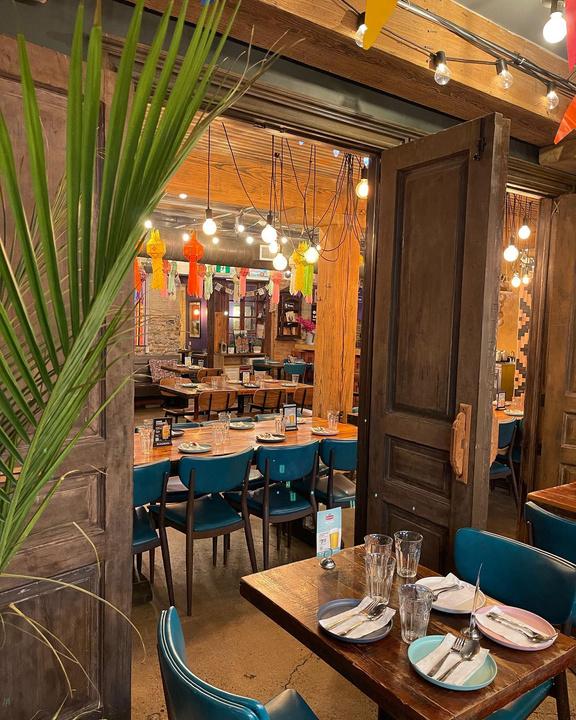

“The rear view mirror and the drive ahead”
Q. Looking back on your journey from that fateful day when you met at the elephant camp to now, what stands out to you about it and what advice can you share?
CN. I know it sounds a little cliché, but my advice to others is to follow your heart. Life will take you down many paths and in many different directions. I never imagined I would be where I am today. I thought I would be a nurse my whole life. I didn't think I would move to Canada. But here I am today, an executive chef and co-owner of several restaurants and I've raised a beautiful family here in Toronto. I wouldn't have been able to do it if I didn't follow my heart. Now I get to do what I love cooking and sharing my food and my culture with others every day.
Q. What’s next for the two of you?
JR. We're off to Thailand this summer for a month with our kids for a much-needed holiday. It will be nice to unwind, reenergize, and bring back some new ideas and inspirations.
Nuit takes so much pride in Thailand, so she always wants to keep sharing more from her home country, from new dishes to cultural experiences. We started with bringing Northern Thai foods at PAI, to Royal Thai-inspired cuisine at Kiin, and more recently, traditional Thai breakfast and lunch dishes on our new brunch menu at Kiin Café. Next up, our newest concept, Chaiyo by PAI, opens later this summer in the new CIBC Square building and will focus on authentic Thai street market foods. Nuit loves these new opportunities to bring common Thai foods in Thailand to Toronto, where it is not as common.
We also currently have 3 ghost kitchen locations, in partnership with Kitchen Hub. It has been a great partnership so far, allowing us to bring our foods to more people in the GTA, and we look forward to more opportunities to expand further outside of the Toronto core.

“The rear view mirror and the drive ahead”
Q. Can you ever see the two of you returning to Pai and opening a Curry Shack type restaurant?
JR. The thought is definitely there in the back of our minds. Maybe not exactly a Curry Shack-type restaurant, but we want to do something in Pai. We actually bought property there and we would love to do culinary retreats to Pai some day! We would love to host guests on our property. Nuit can take them out foraging and fishing, take them to the markets, host cooking classes and we can have huge feasts every night outside. That's the ultimate dream.
“The appetizers, a song and a dish.”
Q. You say in your book “Appetizers are synonymous with friends. When people come to my house, I always have three or four appetizers ready to set on the table. When I was growing up, cooking appetizers was our way of hanging out and enjoying time with people.” If friends were to come over tonight, what appetizers would most likely be on the table?
CN.
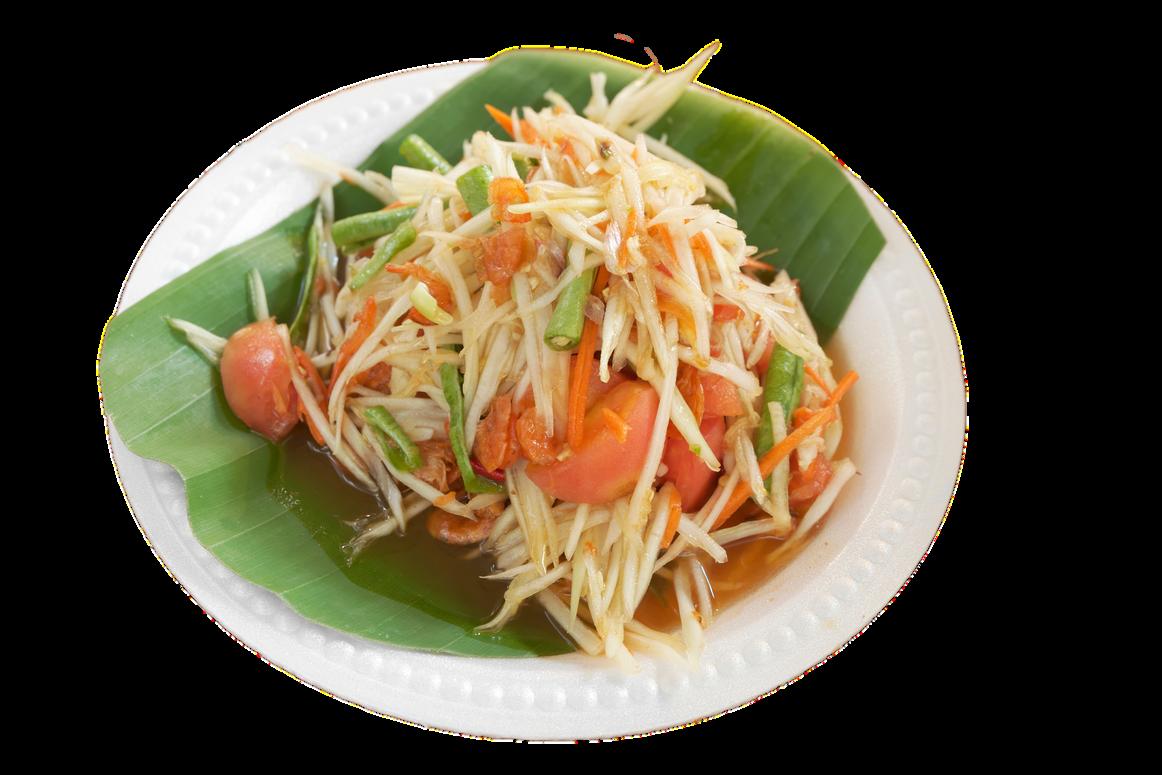
Some kind of Nham Prik, which is a relish that is very popular in Northern Thai cuisine. We usually eat it with fresh, raw vegetables—kind of like Thailand's version of crudités with dip.
Laab Salad

“The appetizers, a song and a dish.” Continued
Q. From reading the book and the wonderful stories on your IG page @paitorontostory, I can see how important music is to you. Can you explain why? Also, in the book you write “A good song can take you back to the best night of your life, and the smell of food can do the same.” So, my question is: Can you share a song, as well as, a dish that takes you back to a magical night?
CN.
Song: High Tide Or Low Tide – Bob Marley Dish: Green curry in coconut shell
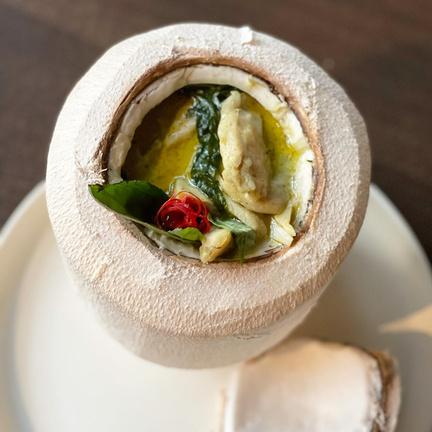
Q. Finally, I have to ask…Can you share the recipe for one of those incredible sounding soups?
CN. The recipe for Tom Jeud (Egg Tofu Soup)
(See page 37)
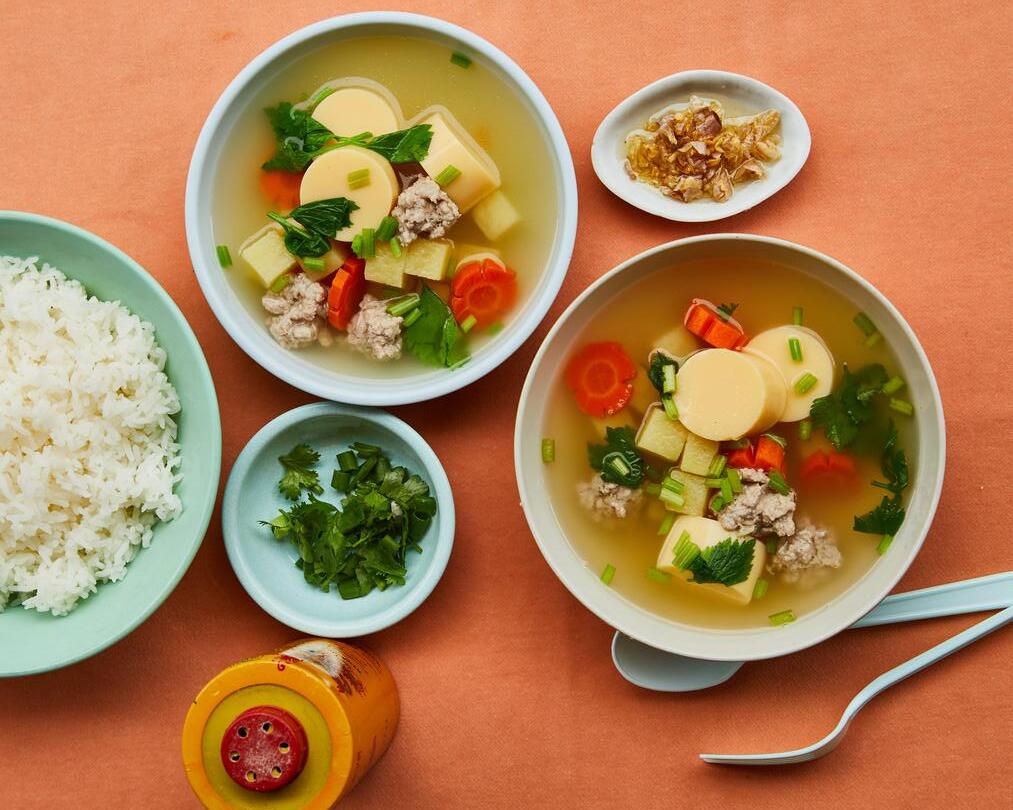
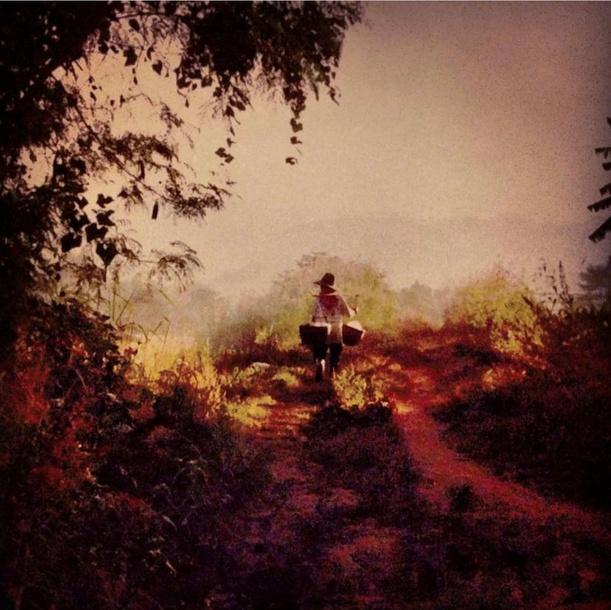










Q. What 3 ingredients are always in your pantry at home?


CN - Fish sauce, Shrimp paste, Oyster sauce.
Q. What’s your umami ingredient?
CN - Shrimp paste & dried shrimps.
Q. What kitchen gadget changed your life?
CN - Thai stone mortar & pestle.
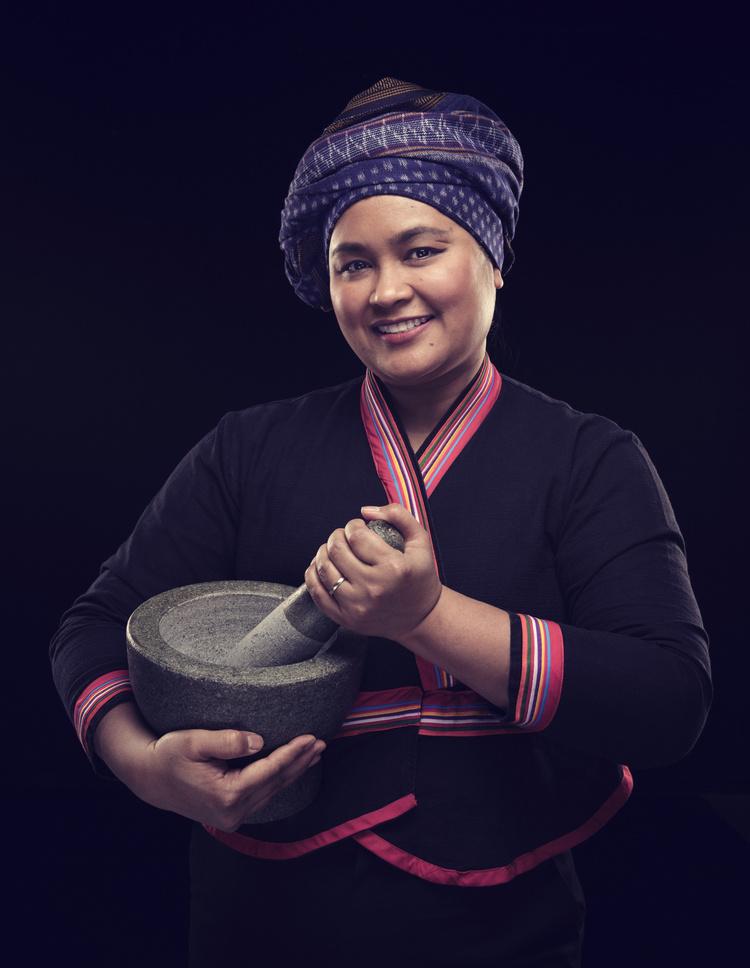
Q. Fave dish to cook
CN - Any kind of curry.
Q. Fave dish to eat
CN - Any kind of noodles.
Q. Fave Fellow Chef
CN - I can’t pick there are too many!
Q. Fave Restaurant in the World
CN - I can't remember the name, but it's this noodle stall in Chiang Mai. It was just a small little shack, but they made the best noodles!
Q. Fave junk food
CN - I don’t eat a lot of junk food, but I have a soft spot for french fries.
Q. What’s your go to delivery/takeout order for the family when you are not at the restaurant?
CN - Our family likes to order a lot of Korean food.
Q. What’s your perfect burger?
CN - Pork belly burger with holy basil & crispy bacon. I make a version of this at home, which is inspired by Pad Gra Prow.

¼ teaspoon white peppercorns
9 unpeeled Thai garlic cloves (or
3 peeled regular garlic cloves)
2 tablespoons finely chopped
cilantro roots with 3-inch stems or cilantro stems
7 ounces (200 g) regular ground
pork
2 tablespoons thin soy sauce
1 tablespoon Thai oyster sauce
1 tablespoon vegetable oil
1 package (8 ounces/245 g) egg
tofu
3 cups Chicken Broth or no-saltadded store-bought
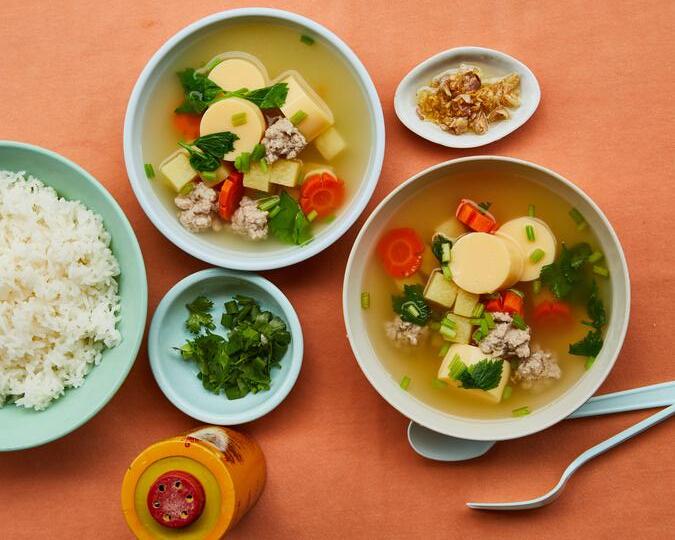
½ teaspoon sea salt or Himalayan salt
1 Yukon Gold potato, peeled and cut into ½-inch cubes
½ medium carrot, peeled and sliced into ¼-inch rounds
¼ cup packed Chinese celery leaves or regular celery leaves
¼ cup packed coarsely chopped
Chinese celery or thinly sliced regular celery
1 tablespoon Garlic Chips, without the garlic oil (recipe follows)
Steamed jasmine rice, for serving
1. Using a stone mortar and pestle, grind the white peppercorns, garlic, and cilantro roots to a fine paste. (If you do not have a mortar and pestle, finely mince the garlic and cilantro roots.)
2. In a medium bowl, combine the ground pork, 1 tablespoon of the thin soy sauce, oyster sauce, garlic and cilantro paste. Mix well. Cover and refrigerate for at least 30 minutes or overnight.
3. Using a small melon baller or spoon lubricated with some of the vegetable oil, scoop the marinated ground pork into ½-inch balls, moistening the melon baller with oil between scoops to prevent sticking. Place the pork balls on a large plate and set aside.
4. Use a sharp knife to cut the egg tofu package on the dotted line. Slowly push the egg tofu out of the package from the bottom, like you would squeeze a toothpaste tube. Trim the uneven ends and cut the tube crosswise into six 1-inch medallions.
5. In a medium pot over high heat, bring the chicken broth and salt to a rolling boil. Add the potatoes and carrots and cook for 5 minutes. Add all the pork balls, the egg tofu, and the remaining 1 tablespoon thin soy sauce. Decrease the heat to medium and cook until the pork balls rise to the surface, 3 to 5 minutes. Stir in the celery leaves and stems and the deep-fried garlic. Remove from the heat. Serve with steamed jasmine rice.
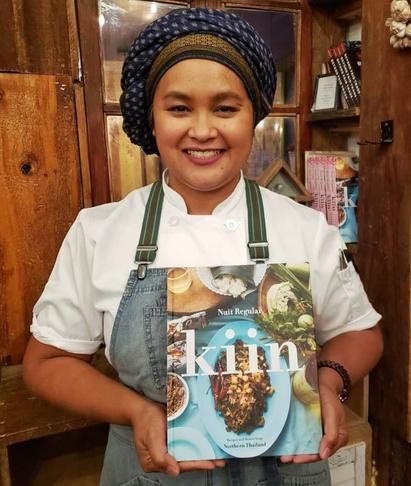

Makes about ¼ cup INGREDIENTS
1/3 cup unpeeled Thai garlic cloves or peeled regular garlic cloves, cut in half
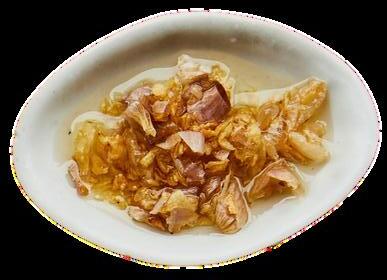
½ cup sunflower oil
1. Using a stone mortar and pestle, coarsely grind the garlic. Transfer to a small bowl.
2.In a small pan over high heat, heat the sunflower oil. When the oil is hot, reduce the heat to medium, add the garlic and cook, stirring constantly, until the garlic turns deep yellow, 2 to 3 minutes. Remove from the heat.
3.Strain the oil through a stainless steel strainer placed over a small pot. Scoop the garlic out of the strainer and place on a plate lined with paper towel to absorb excess oil.
4.Transfer the cooled garlic oil to an airtight container and store at room temperature for up to 2 weeks.

Celebrating Wine, music, and food
Includes a pairing recipe
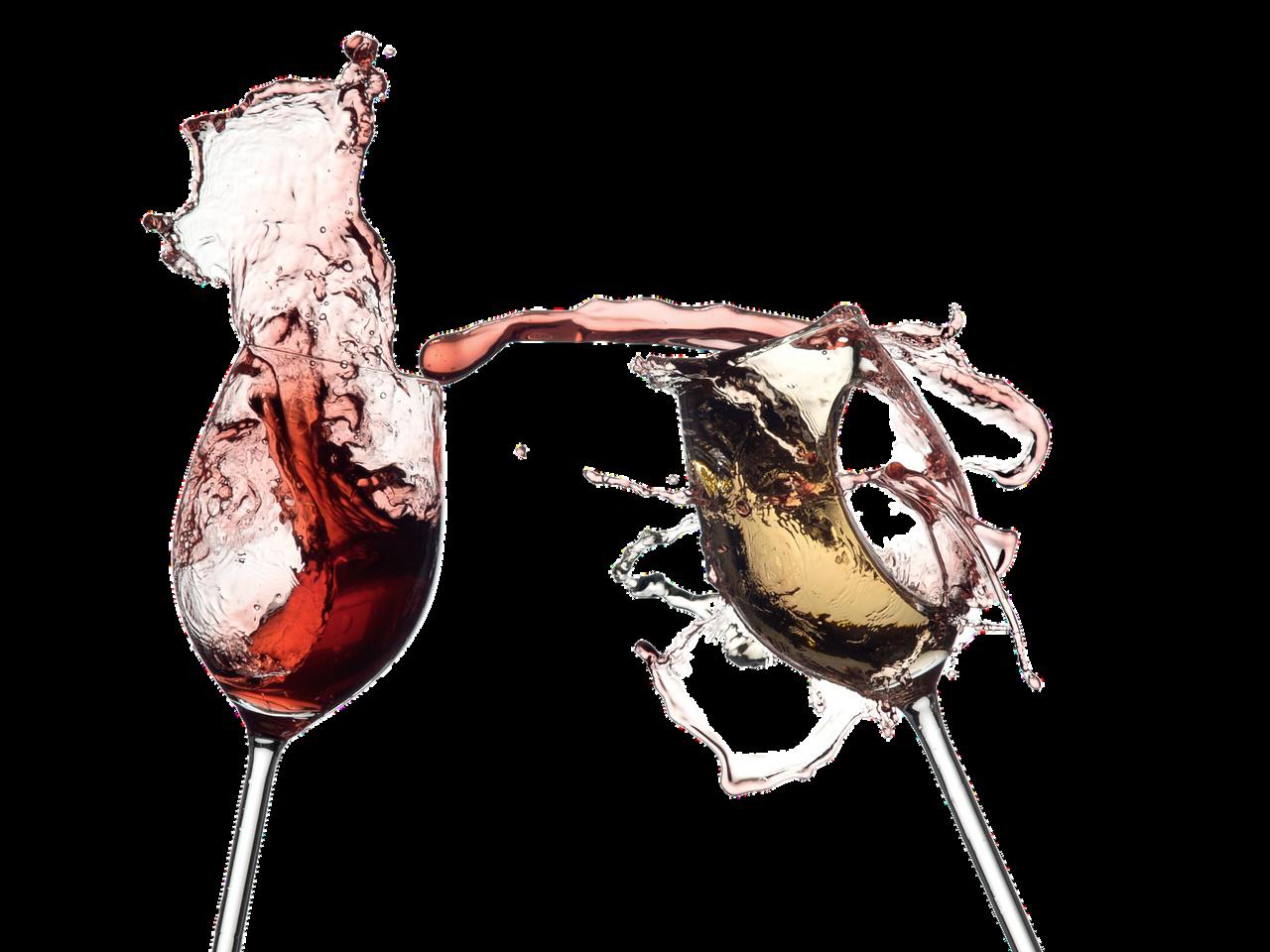


Working closely with winemaker Alexis Cornu, winner of fifteen gold medals and seven 90+ point rosé wines, the founders spent much of 2019 – in-between Post's sold-out tour dates – traveling frequently to the winery. They tried many grape varietals and sampled over fifty blends until they developed a new blend of premium rosé that they were happy with.
Hip hop superstar Post Malone created this grenache-based rosé with the help of a coop of esteemed winemakers located in Provence, France. Named after the artist's favourite tarot card––Nine of Swords, which symbolizes triumph over life’s daily challenges. The colour is pale salmon and the wine has appealing aromas of strawberry and lavender. Delicate flavours of watermelon and a lemon zest minerality make it a perfect pairing for sushi.
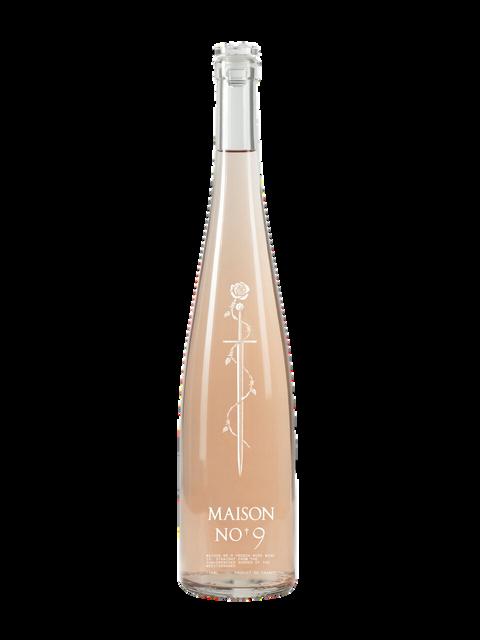

- Post Malone
Release Date: June 12, 2020
Region: Provence, France
“Rosé is for when you want to get a little fancy”

- 1 lb fresh tuna, thinly sliced
- 4-5 limes, juiced
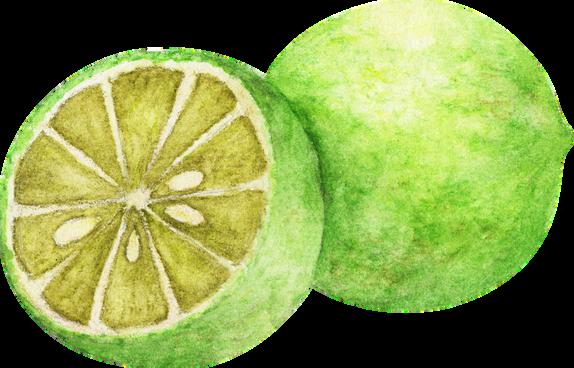
- 1 cucumber, peeled and thinly
- 1 red onion, thinly sliced
- 2 serrano peppers, thinly slice
- 1/4 cup chopped cilantro
- Salt and pepper to taste
- Tortilla chips, for serving
1. In a bowl, place the thinly sliced r it. Make sure the tuna is fully submerged in the juice. Let it marinate for about 15-20 minutes.
2. Meanwhile, prepare the aguachile sauce. In a blender, combine half of the cucumber slices, half of the onion slices, half of the serrano peppers, and the chopped cilantro. Blend until smooth.
3. Once the tuna has marinated, drain the lime juice and discard it. Place the tuna in a serving dish.
4. Pour the aguachile sauce over the tuna, making sure it covers the slices well.
5. Add the remaining cucumber slices, onion slices, and serrano peppers on top of the tuna.
6. Season with salt and pepper to taste.
7. Let the flavors meld together for 5-10 minutes before serving.

8. Serve the Tuna Aguachile with tortilla chips on the side for scooping up the delicious sauce.
Enjoy your Tuna Aguachile!
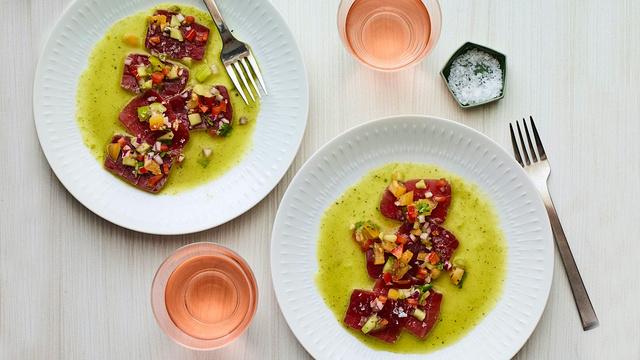




The Spice Trader Thai Yellow Curry powder is an amazingly aromatic blend of Asian spices. It has the lovely top notes of dried lime leaf powder, lemongrass, and ginger and the base of garlic and Turmeric. Traditional Thai yellow curry is made from scratch using all fresh ingredients. We have made it easy, simply replace all the fresh herbs and spices with this blend and make your curry as you would normally. Of course, if you have the fresh ingredients, use them.

Thai Yellow Curry Spice Mix, also known as Kaeng Kari or Kaeng Kali, is a popular spice blend used in Thai cuisine. While the exact origins of this spice mix are unclear, it is believed to have been influenced by Indian and Malaysian culinary traditions. Curry itself was introduced to Thailand by Indian traders and immigrants during the Ayutthaya Kingdom (1351-1767). The Thai people adapted the concept of curry and created their own unique versions with local ingredients and flavors. Over time, Thai chefs and home cooks experimented with various combinations of spices and ingredients to develop their own versions of yellow curry spice mix. While the exact composition of the spice mix can vary, it typically includes: turmeric, coriander, cumin, fenugreek, mustard seeds, and other aromatic spices.The Thai yellow curry spice mix is known for its vibrant yellow color, thanks to the turmeric in the blend. It imparts a warm and slightly spicy flavor to the curries it is used in, creating a perfect balance of sweetness, creaminess, and heat.Today, yellow curry is a staple in Thai cuisine and is used to prepare a variety of dishes, including curries with vegetables, poultry, seafood, or even tofu. It is often combined with coconut milk to create a rich and creamy texture that complements the spices.
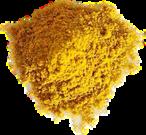




CHEF EMILY ZHUANG
Shrimp Curry
1 1/2 lb XL shrimp (peeled and deveined)
2 large heirloom tomatoes
2 bunches cilantro roots
Thumb size piece of galangal
2 Thai green (bird's eye) chilies
(use up to 4 for extra heat)
1 large cooking onion
2 shallots
1 cup full-fat coconut cream
1 cup chicken broth (sub. vegetable broth)
2 1/4 tsps Thai yellow curry powder
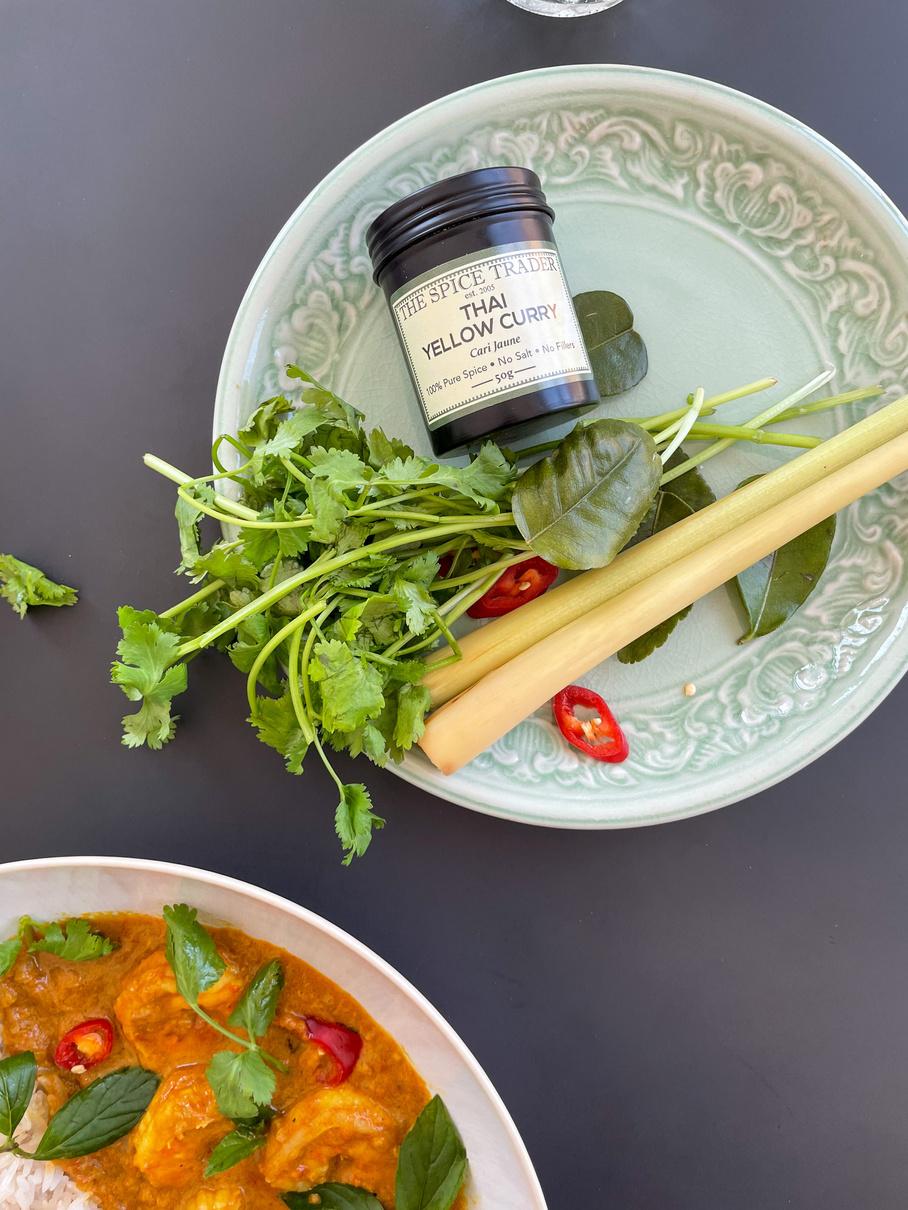
2 tsps shrimp paste
Coarse sea salt
1.5 tsps palm sugar (sub. yellow or white sugar)
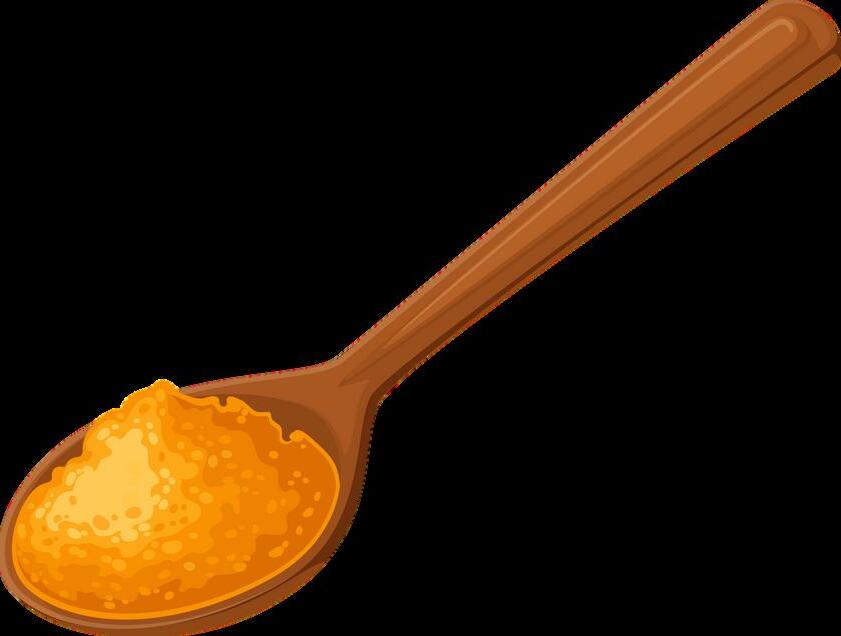
Fresh mint and cilantro
Optional : Any variety of seasonal vegetables like zucchini, peppers, bamboo shoots. Any type of mild fresh red chili for garnish.
Garlic Fried Rice Other
2 1/2 cups leftover cooked rice (refrigerated 2 -12 hours)
6-8 large garlic cloves
1 1/2 tsps shrimp paste
Salt to taste
Optional : Thinly sliced scallions for garnish.
Oil
Multi-purpose grater
Medium bowl

CHEF EMILY ZHUANG
Step 1
De-seed Thai green chilies and roughly dice.
Step 2
Finely chop cilantro roots and galangal.
Step 3
Add shrimp paste to the mortar and pestle along with diced chilies, cilantro root and galangal. Add a small pinch of the coarse sea salt and pound ingredients until a smooth paste is formed. Set aside.
Step 4
Finely dice the onion and shallots and set aside.
Step 5
Using medium to large holes on a multi-purpose grater, grate tomatoes (including the skin) into a bowl.
Step 6 (Prep for Garlic Fried Rice)Smash skin-on garlic cloves with the flat side of a large prep knife. Discard the skins and mince the garlic. Set aside.
Step 7
Heat a large skillet to medium-high temperature. Once the skillet has reached temperature, add a generous drizzle of oil and reduce heat to medium. Important : Make sure the oil is not too hot, otherwise aromatics will burn. Add the diced onion and shallots and a pinch of salt, sweat to caramelization, stirring frequently. This will take a good 5-6 minutes. Once onions are soft and nicely coloured, add the curry powder, quick stir to combine, then add in the shrimp and chili paste from the mortar and pestle. Cook the paste for 30-60 seconds, then incorporate the grated tomatoes and sugar, and cook for 2-3 minutes. At this point, check for seasoning and flavour. Adjust with salt, pepper, curry powder, and/or sugar to your liking as needed.

CHEF EMILY ZHUANG
Step 8
Add in the broth, strirring occasionally, simmer for 2-3 minutes then fold in the coconut cream half cup at a time. The consistency at this point should be smooth with a bit of chunkiness from the tomatoes and onions. Simmer for 6-8 minutes, stirring in between, or until desired thickness is achieved. Note : Liquid will reduce and sauce will thicken with longer cooking time.
Step 9
Add in shrimp (and vegetables if using). Simmer for an additional 3-5 minutes until shrimp is just cooked (and vegetables slightly softened).
Step 10
Toss in a few handfuls of fresh herbs, stir to combine. Turn off the heat and remove from burner, allowing herbs to infuse with the curry which is now ready to serve.
Garlic Fried Rice cooking instructions:
Step 11
Heat a clean frying pan or wok to medium temperature. Once heated, add a good drizzle of oil followed by the minced garlic. Cook (stirring consistently) for 3-5 minutes until garlic is fragrant and coloured but not burnt.
Step 12
To the toasted garlic add the shrimp paste, cook for 15 seconds, add a second drizzle of oil, then add the rice. Using the back of your spatula or spoon, flatten to ensure rice is spread out in an even layer. Stir-fry for 3-5 minutes until garlic is fully incorporated and rice is rehydrated and fluffy. Add water (a tsp at a time) as needed to rehydrate the rice.
Step 13
Add salt to taste, a final stir and fluff, and you're ready to plate. Top rice with thinly sliced scallions and a generous serving of curry and shrimp. Optional add : additional herbs and fresh chilies for garnish.
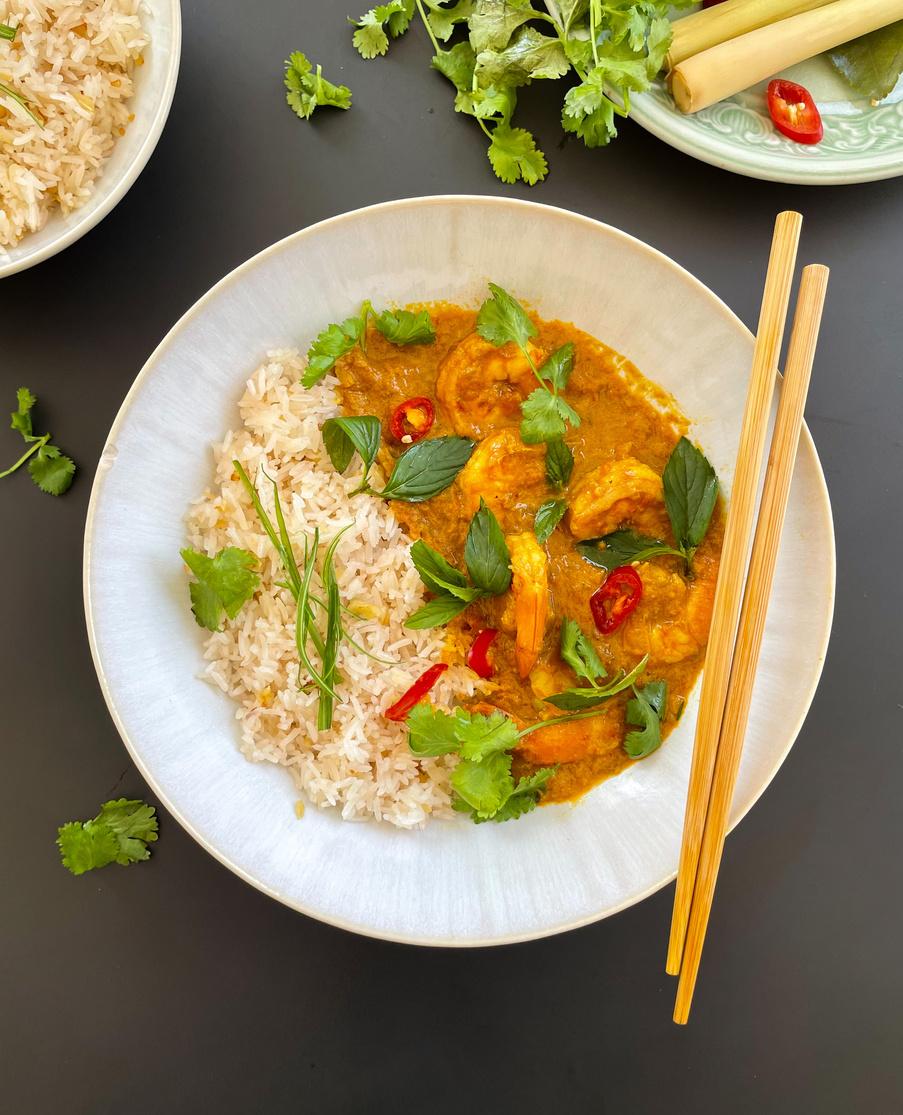
Specializing in the craft of creating custom weekly meal plans to bespoke dining experiences, providing a uniquely personal culinary experience every time.

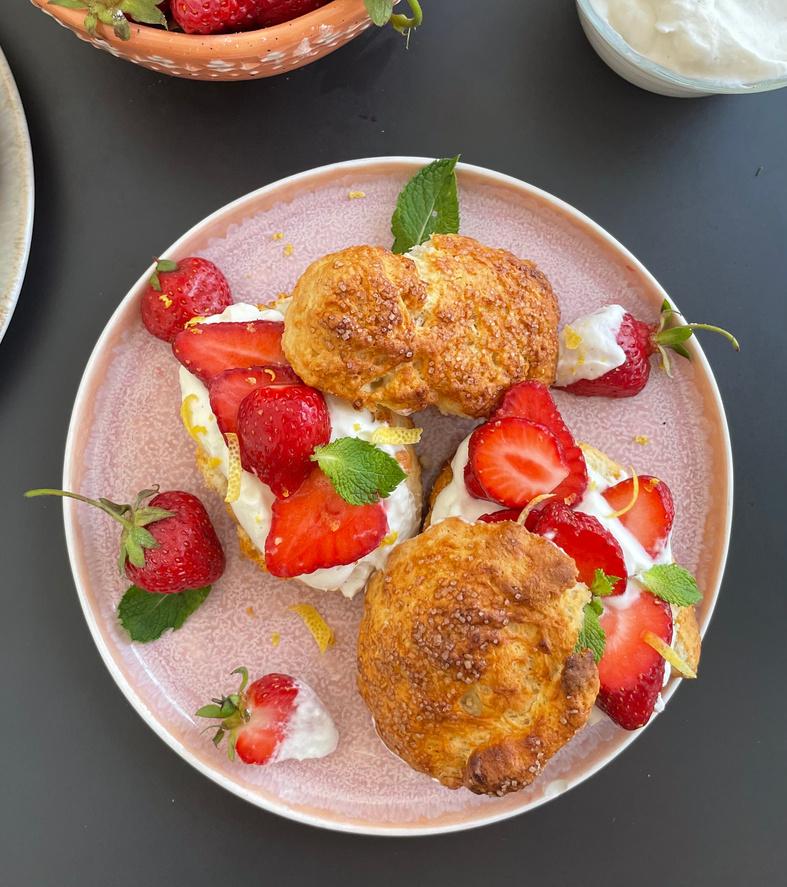
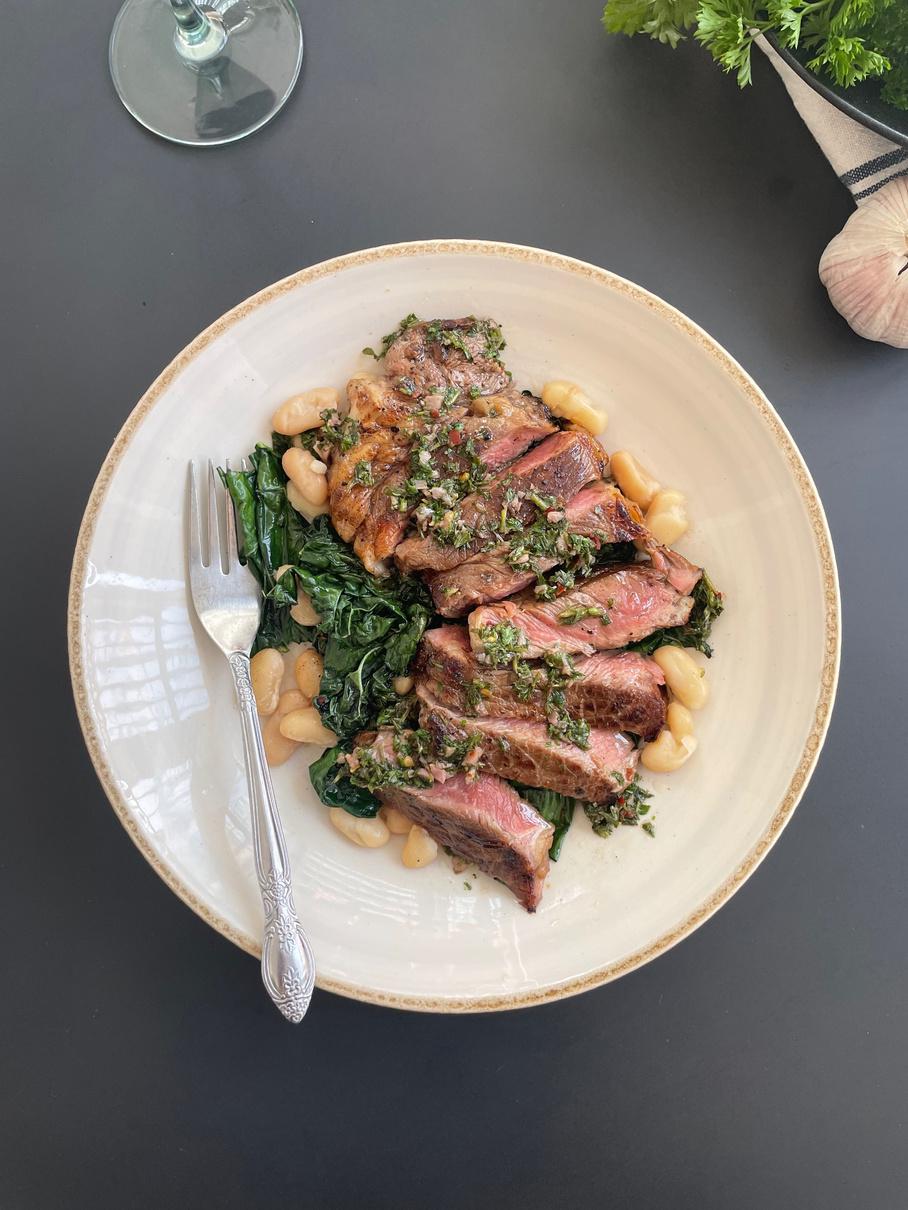
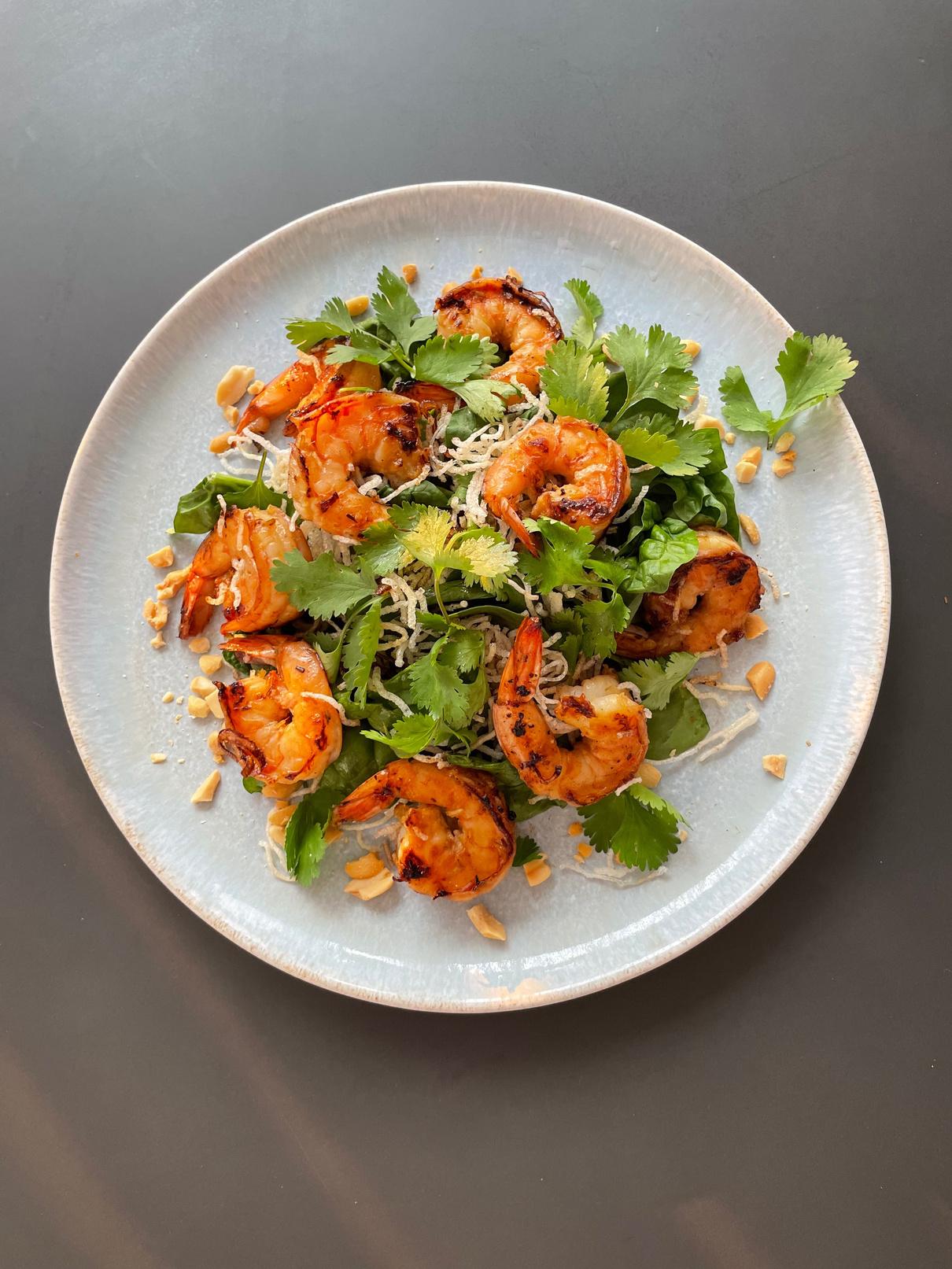
Every dining experience with me as your Personal Chef will be met with the highest level of attention and detail, no matter the occasion or budget Catering to weekly in-home meal prep, in-home fresh serve dining, or special events, I will customize a menu that will provide a delightful experience, one you will look forward to again and again.
TEL: 416-892-5164
EMAIL: UMAMICHEF.TO@GMAIL.COM




The Beatles’ song “Hey Jude” is one of the most iconic and memorable songs of all time and was released as a single in 1968. The song was written by Paul McCartney, who dedicated it to John Lennon’s son, Julian, during Lennon’s divorce from his wife, Cynthia.

“Hey Jude” was a huge commercial success, topping the charts in several countries and becoming one of the bestselling singles of all time. It has been covered by numerous artists,
including Elton John, Wilson Pickett, and Joe Anderson. The song’s popularity has endured throughout the decades, and it continues to be a favorite among fans and casual listeners.
The song is known for its simple yet powerful lyrics, which are designed to uplift and inspire the listener. The opening lines of the song, “Hey Jude, don’t make it bad / Take a sad song and make it better,” are an invitation to the listener to rise above their troubles and find hope and happiness in life.
The song’s chorus is equally inspiring, with McCartney singing, “Na-na-nana-na-na-na-na-na-na / Hey Jude, don’t let me down / You have found her, now go and get her / Remember to let her into your heart.” The repeated “na-na-na” refrain has become an iconic part of the song.
Checkout the playlist from The Chef’s List on page 53 from Chef Nuit & Jeff Regular which includes “Hey Jude.”

The song’s structure is also notable for its extended coda, which features McCartney singing “Na-na-na-na-na-na-na-na-na-na / Hey Jude” over and over again while the music builds to a climax. The coda was reportedly inspired by a dream McCartney had, in which he heard a choir singing “Hey Jude” in a church.
“Hey Jude” is also notable for its use of unconventional instruments, such as a tambourine played with a drumstick and a bass guitar played with a bow. The song’s production was overseen by George Martin, who worked closely with McCartney to bring his vision for the song to life.
“Hey Jude” is a timeless classic that continues to inspire and uplift millions of people around the world. Its simple yet powerful lyrics, memorable melody, and innovative production make it one of the greatest songs ever written. Whether you’re a diehard Beatles fan or just enjoy great music, “Hey Jude” is a song that you can’t afford to miss.

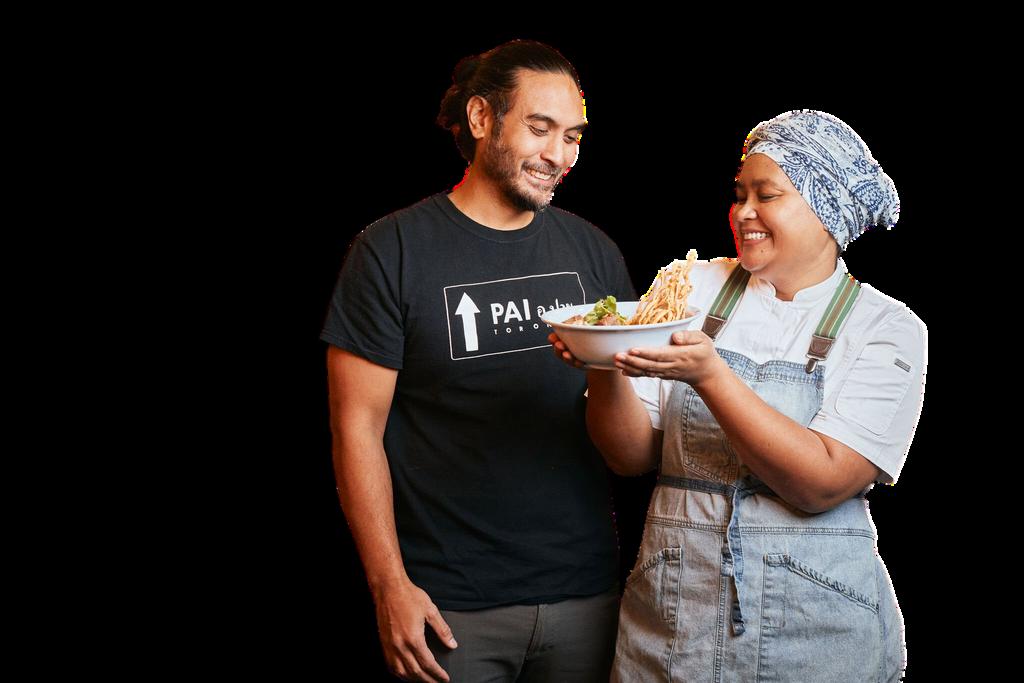

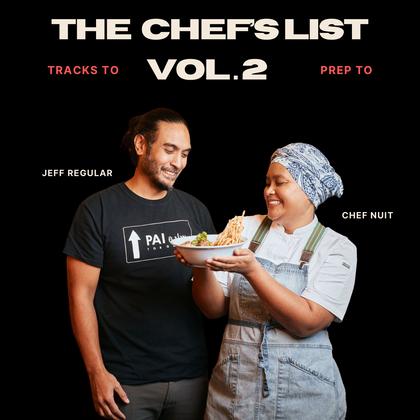

1. Bold as Love – Jimi Hendrix
2. Electric Relaxation – A Tribe Called Quest
3. C.R.E.A.M. – Wu-Tang Clan
4. Burn One Down – Ben Harper
5. Cissy Strut – The Meters
6. My Girl – The Temptations
7. Come Away With Me – Norah Jones
8. You're All I Need To Get By – Marvin Gaye & TammiTerrell
9. One Drop – Bob Marley
10. Bam Bam – Sister Nancy
11. A Message to You Rudy – The Specials
12. Santeria – Sublime
13. Sunday Morning – K-OS
14. BaKardi Slang – Kardinal Offishall
15. Hey Jude – The Beatles
16. Doo Wop (That Thing) – Lauryn Hill
17. Sweet and Dandy – Toots & The Maytals
18. D'yer Make='er – Led Zeppelin
19. Have a Cigar – Pink Floyd
20. Son of a Preacher Man – Dusty Springfield
21. Up on Cripple Creek – The Band


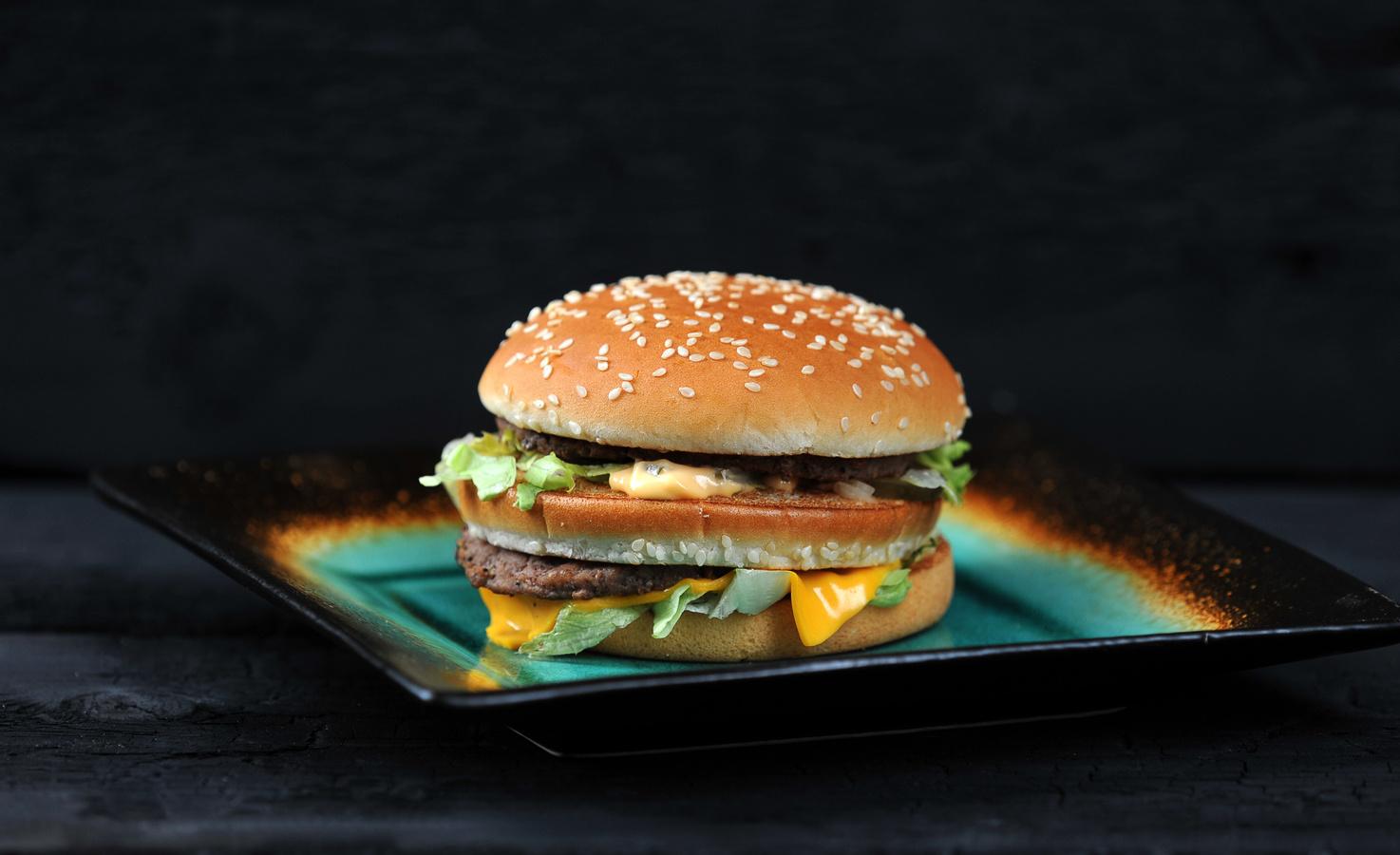

The Big Mac Smash Taco TikTok viral sensation began when a TikTok user named @itsmeju1iette posted a video showing how to make a taco out of a deconstructed Big Mac from McDonald's. In the video, she disassembled the burger & used its ingredients to fill a taco shell. The video gained significant attention and quickly went viral.
As more people saw and shared the video, the trend grew, with TikTok users around the world creating their own versions of the Big Mac Smash Taco. These videos often showcased individuals trying the unconventional taco or putting their own spin on the recipe. The hashtag #bigmacsmashtaco was used to join in on the trend and share variations of the dish.
The viral sensation spread beyond TikTok, attracting attention on other social media platforms and generating buzz among McDonald's fans. Many people were intrigued by the unconventional combination and expressed a desire to try it for themselves. The trend highlighted the creativity and experimentation seen on TikTok and how a simple idea can capture the attention and imagination of millions of users.
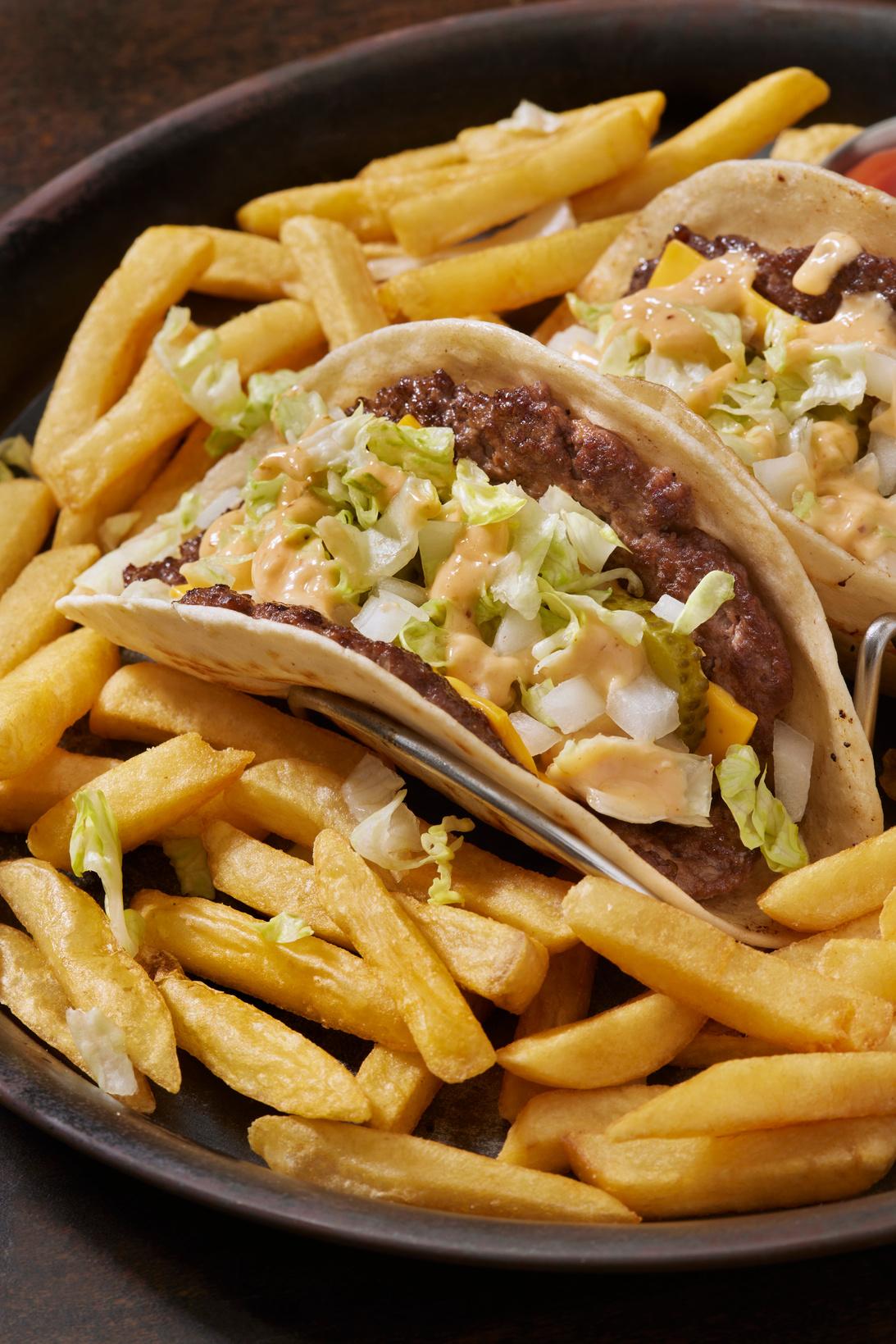

1. In a large skillet, heat the vegetable oil over medium heat. Add the ground beef and cook until browned, breaking it up with a spoon. Season with salt and pepper to taste. Once cooked, set aside.
-1poundgroundbeef
-1tablespoonvegetableoil
-Saltandpepper,totaste
-8smallflourtortillas
-1cupshreddedlettuce
-1cupshreddedcheddar cheese
-1cupdicedtomatoes
-1/2cupdicedonions
-1/2cupdicedpickles
-1/2cupBigMacsauce (seebelowforrecipe)
-Sesameseeds(optional)
FortheBigMacSauce:
-1/2cupmayonnaise
-2tablespoonsketchup
-1tablespoonyellow mustard
-1tablespoonsweetpickle relish
-1teaspoonwhitevinegar
-1teaspoonsugar
-1/2teaspoononion powder
-1/2teaspoongarlic powder
-Saltandpepper,totaste
2. In a separate bowl, prepare the Big Mac sauce by combining: mayonnaise, ketchup, mustard, sweet pickle relish, white vinegar, sugar, onion powder, garlic powder, salt, and pepper. Mix well until all the ingredients are thoroughly combined. Set aside.
3. Preheat a griddle or large skillet over medium heat. Place a tortilla on the griddle and sprinkle some shredded cheddar cheese on one half of the tortilla. Allow the cheese to melt slightly.
4. Add a portion of the cooked ground beef on top of the melted cheese, followed by some diced onions, diced pickles, shredded lettuce, diced tomatoes, and a drizzle of the Big Mac sauce.
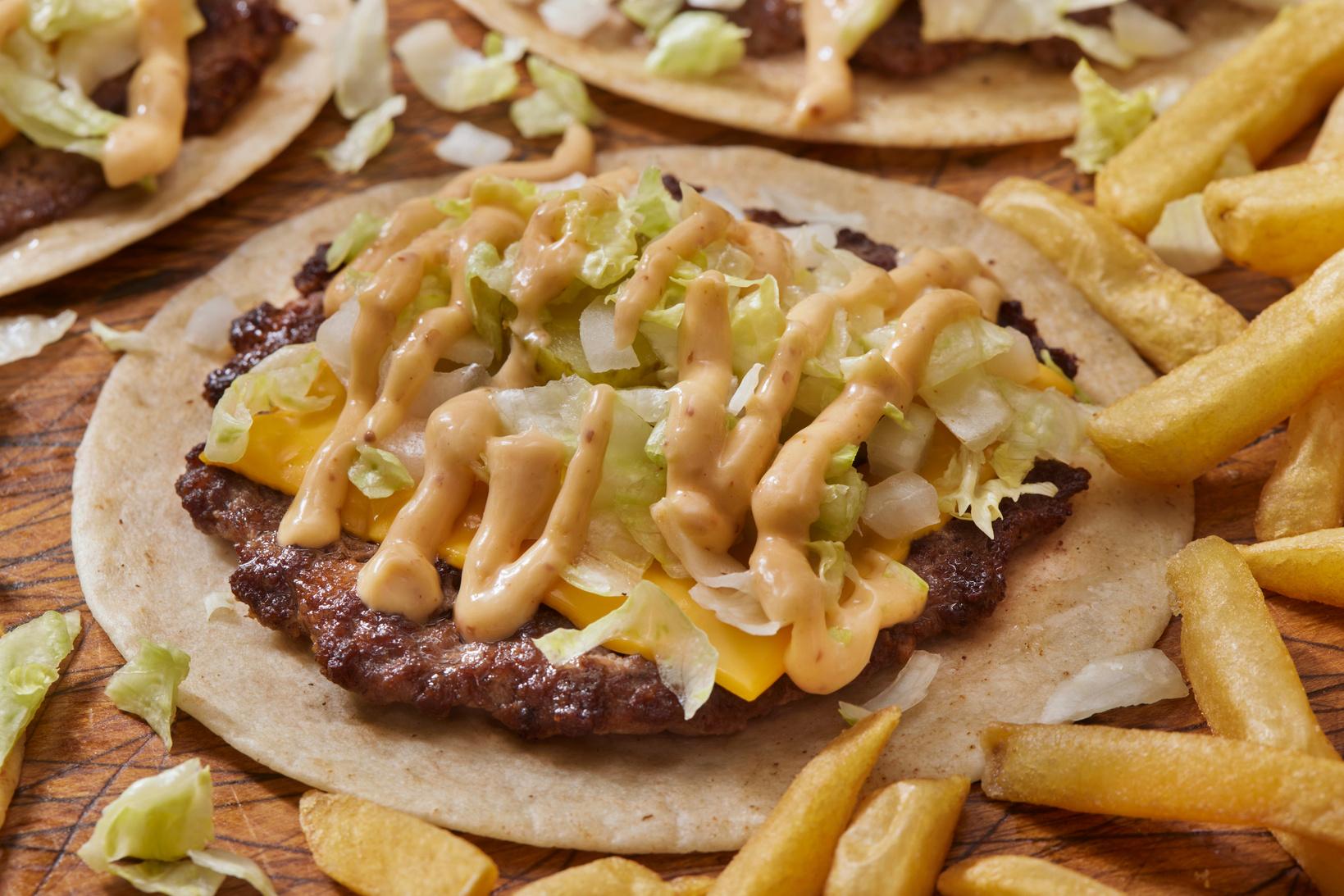
5. Fold the empty half of the tortilla over the filling to create a taco shape. Press down with a spatula to smash the taco slightly.
6. Cook for a few minutes until the tortilla is crispy and the cheese is fully melted. Flip the taco and cook for another minute or two, until both sides are golden brown.
7. Remove the taco from the griddle and repeat the process with the remaining tortillas and filling ingredients.
8. Once all the tacos are prepared, sprinkle some sesame seeds on top (optional) and serve warm.




‘Love to Love You, Donna Summer’ is a documentary film that explores the life and career of the legendary disco singer Donna Summer. The film features interviews with Summer's family members, collaborators, and fellow musicians, as well as archival footage and performances.


The documentary delves into Summer's early life and rise to fame in the 1970s, as well as her struggles with fame and her personal life. It also showcases her impact on the music industry, particularly in the disco era, and her influence on future generations of musicians.
‘Love to Love You, Donna Summer’ premiered at the Cannes Film Festival in 2013 and was directed by British filmmaker Chris Rodley. The film received positive reviews and was praised for its intimate portrayal of Summer's life and legacy.



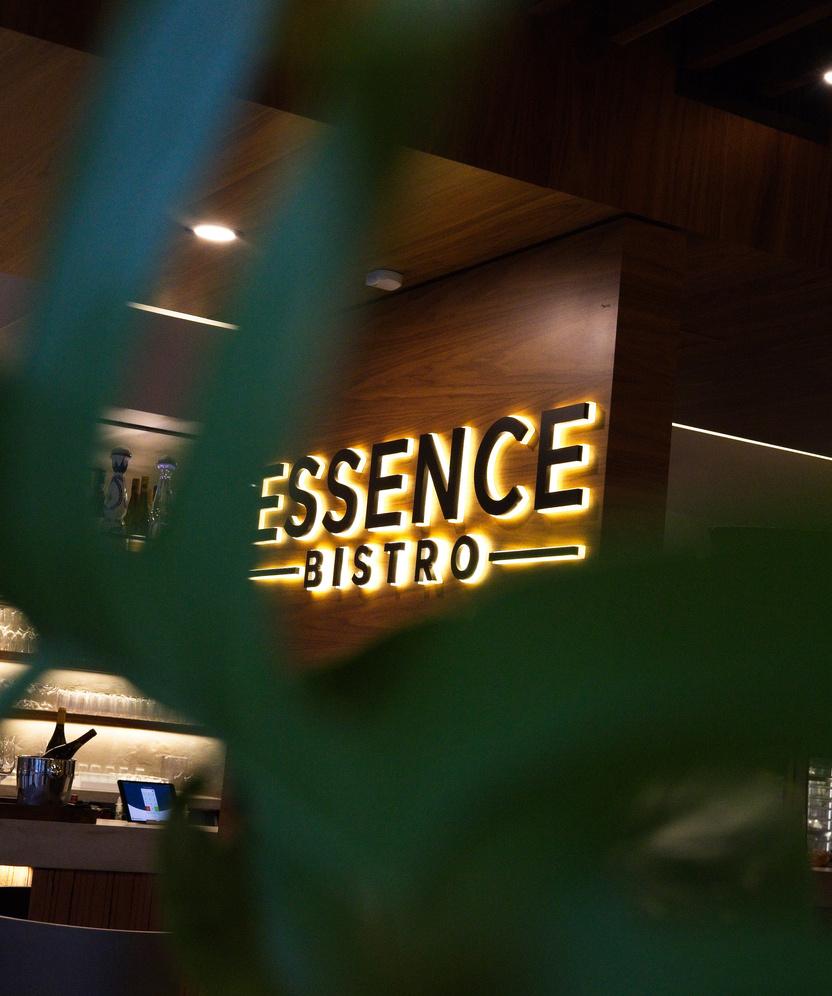
Patricia and Lenin Leon vision started in 2019, when they made significant changes to their eating habits and lifestyle, with the results as an encouragement. They wanted to bring this concept to life. Starting with Essence Juice Bar, they provided the community cold press juices and nutritionally rich food during the pandemic. The concept later evolved into Essence Bistro; tasty food that happens to be healthy. They focused around the seasons and working with local produce to develop the ever changing menu. For lunch, you can grab a quick bite and for dinner, you can taste what the chef has to offer through a tasting menu or an a la carte menu. While a community is being developed around the restaurant, they know that the restaurant will become a destination for any occasion. Concepted around nature, brick, copper, and wood, these elements are highlighted throughout the space. The open concept seats 40 indoors and 20 in their patio.
Essence Bistro prides themselves in sourcing local products and cooking delicious food that happens to be healthy. Food ranges from small plates to tasting menus. Chef Gerry Quintero grew up vegetarian in Mexico, surrounded by the bountiful offers of the markets, his food still carries the latin flavours, however, while latin inspired, his food is not fixed to that description. It has evolved to Canadian cuisine; infusing flavours from everywhere, using different techniques and ingredients. At any point in time the menu consists of 85% local product. Things that are not local are still Canadian, salt from Vancouver, beef from PEI, seafood from the coasts of Canada.
140 Woodbridge A (647) 812-0927
bistro@essencen
essencebistro.co
@essence bistr

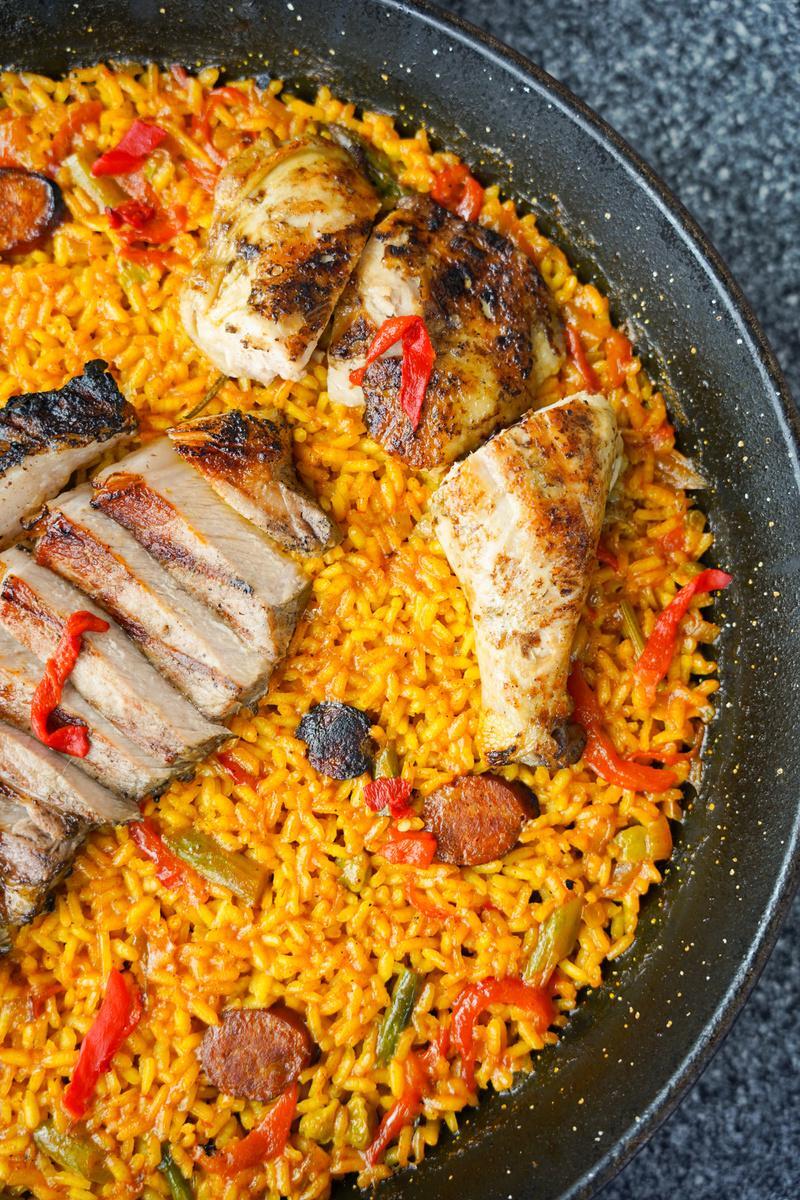

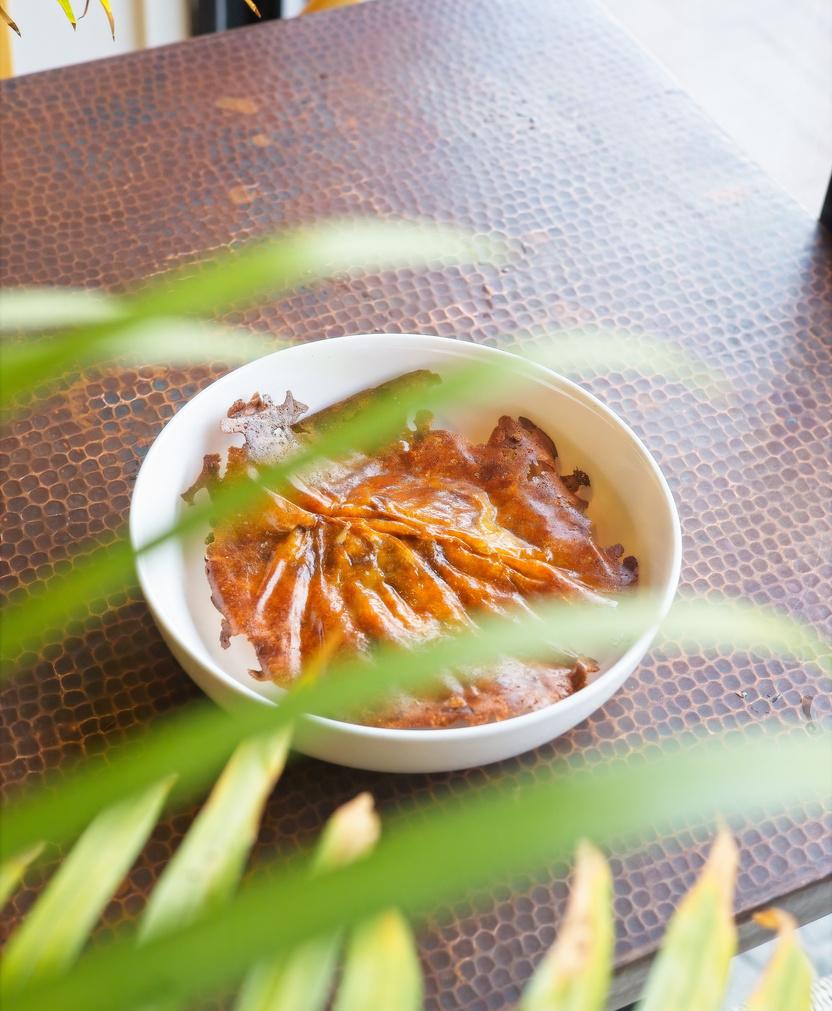
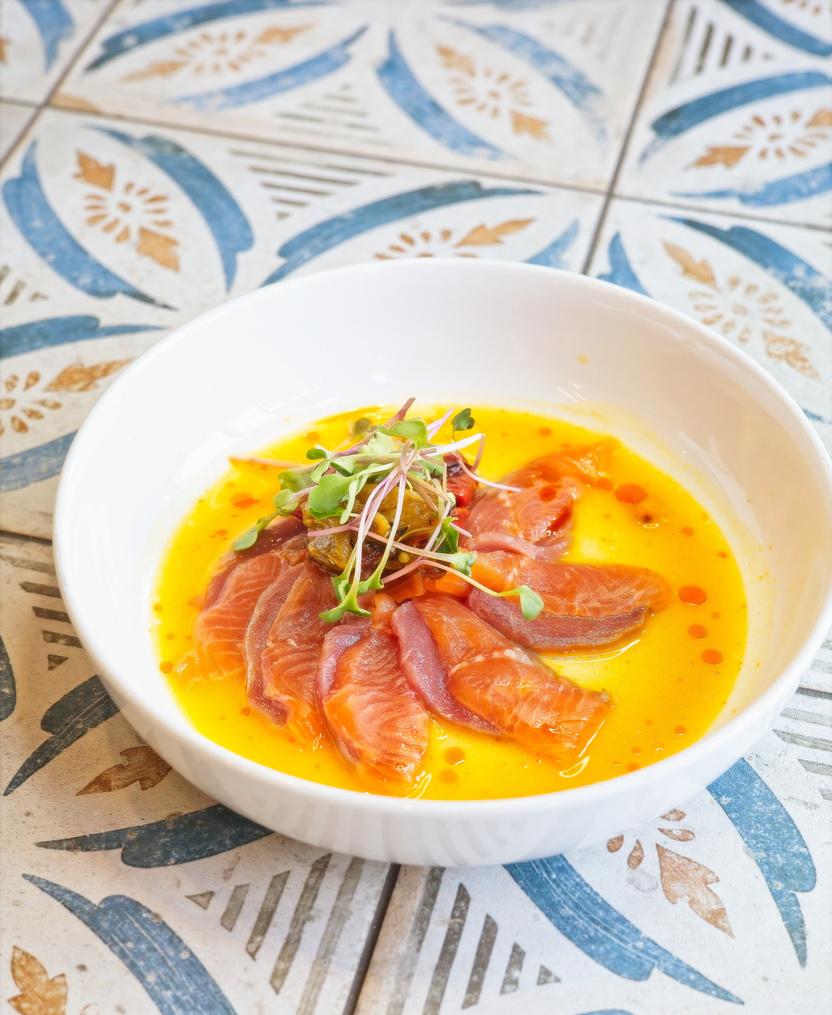
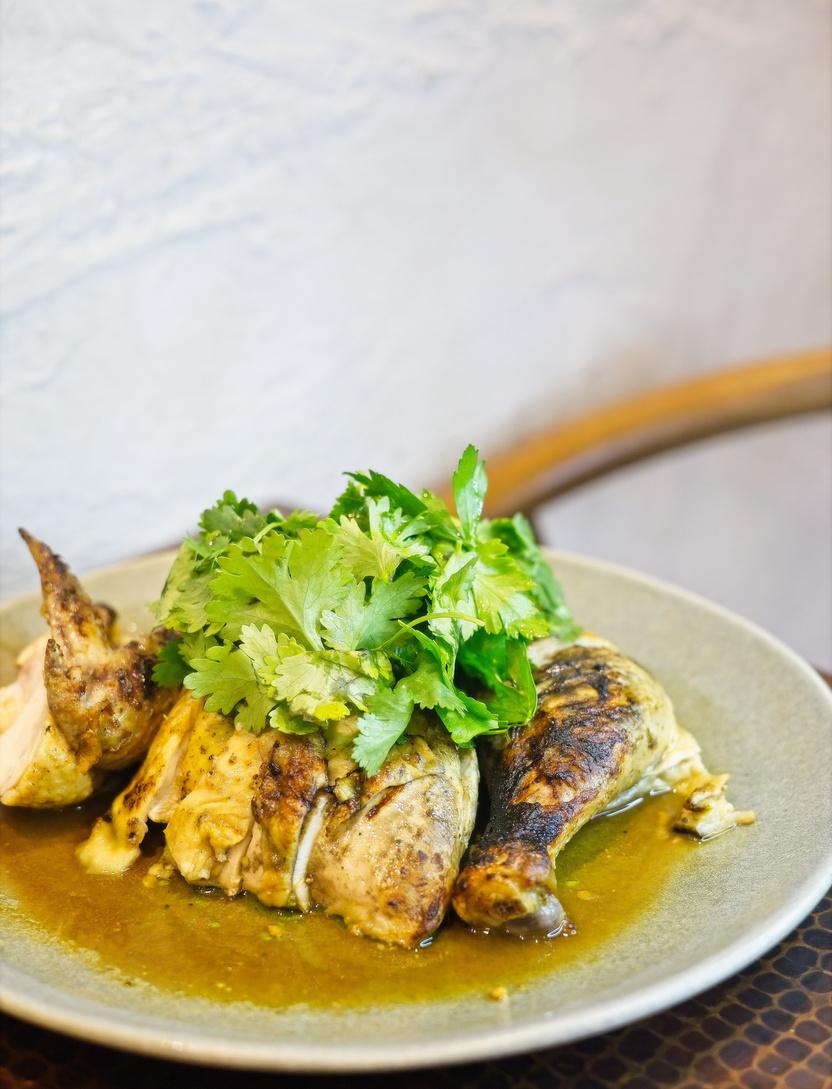
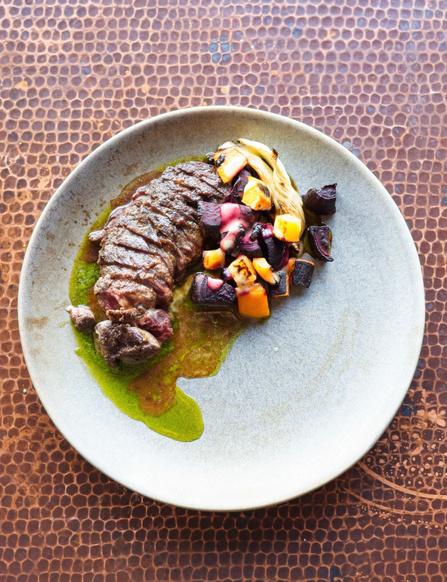
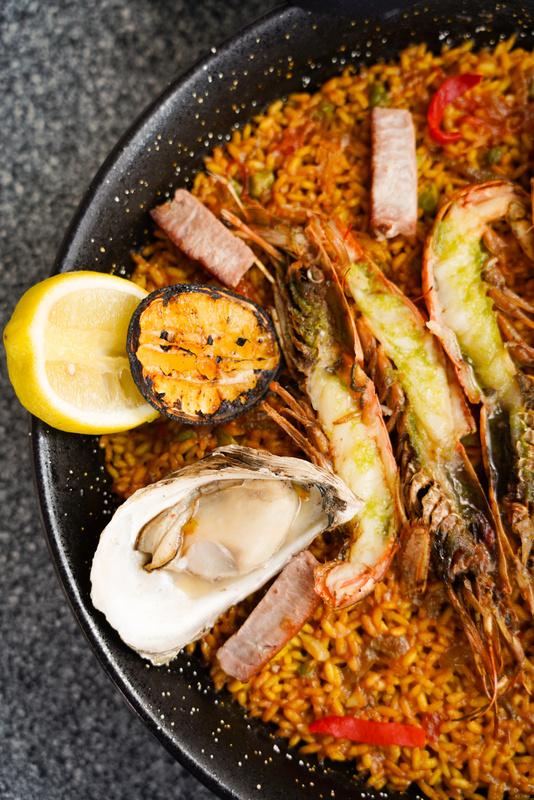

To start, ‘Dips + Things’ is a must which includes: mezze style black sesame hummus, escabeche avocado dip, walnut pepper spread, and is served with crisp root vegetables (both fresh and fried). With asparagus being so sweet this seasonA seasonal feature, ‘Asparagus + Creams,’ which incorporates: roasted asparagus, garlic cream, house crema, chili oil, chili salt, cotija cheese (inspired by street corn). For a main course, their PEI sourced steaks are great, simply served with mustard greens chimichurri and jus (made from duck, chicken and beef bones). A popular dessert feature, ‘Strawberries + Cream,’ is made from: sponge cake, cooked and raw strawberries, crema, raw sugar, and hibiscus powder. This is an eclectic take on childhood memories of eating strawberries with raw sugar and cream.
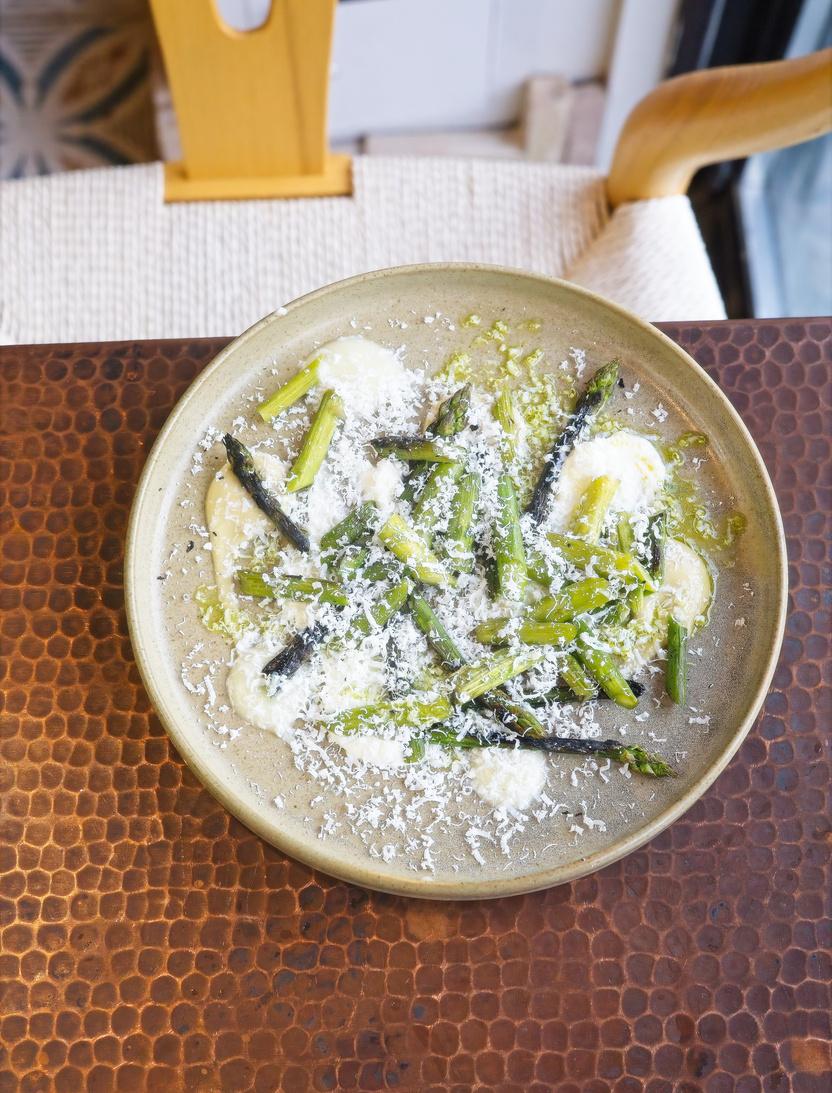
JULY 2023

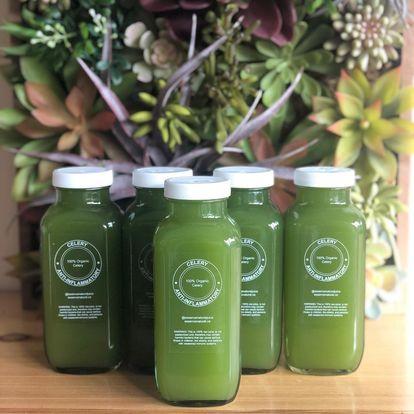

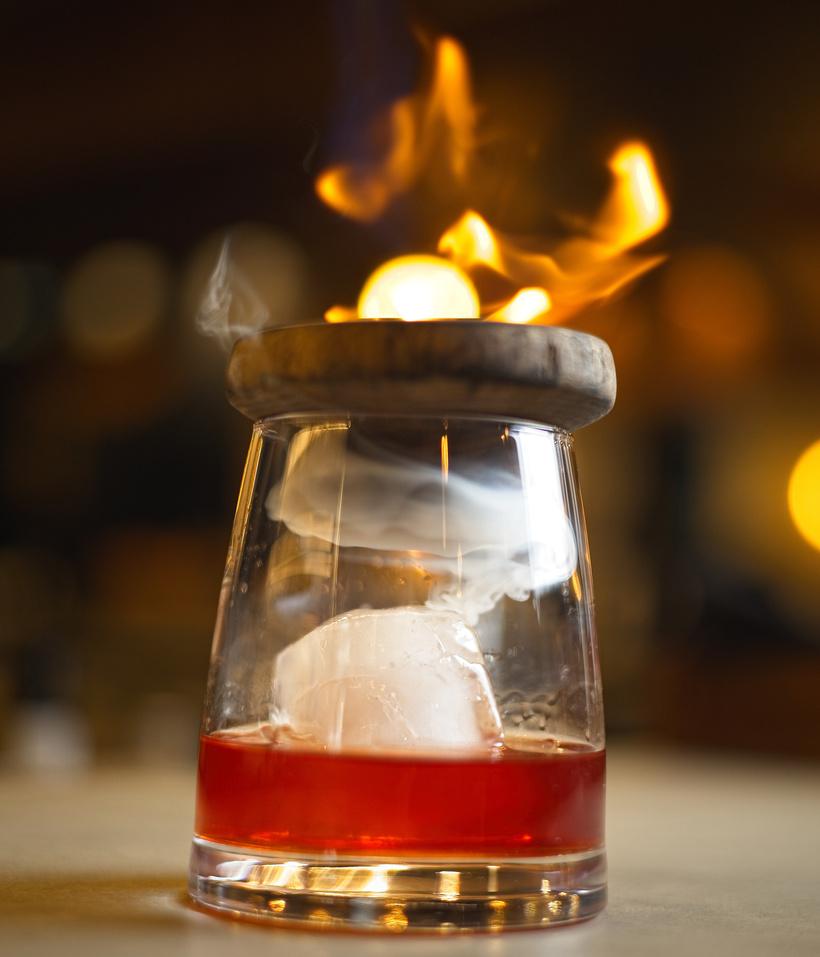
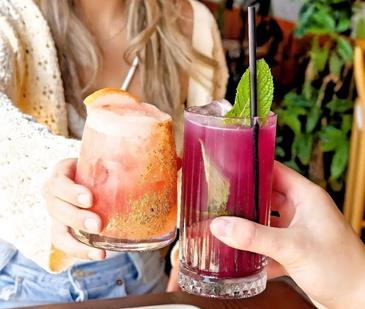
With a cold pressed juice program, Essence focuses on having a wide range of fresh cocktails. The bar program matches the food by using local seasonal ingredients. The signature shaken ‘Tamarind Margarita,’ combines: lime juice, orange juice, tamarind purée, house made chili salt, and Cazadores tequila reposado. The signature stirred Negroni ‘El Forager’ features: sweet vermouth, Cinzano, Dillon’s gin, wild mushrooms, spruce tips, and cacao butter. They also Have a full selection of creative non-alcoholic options available.

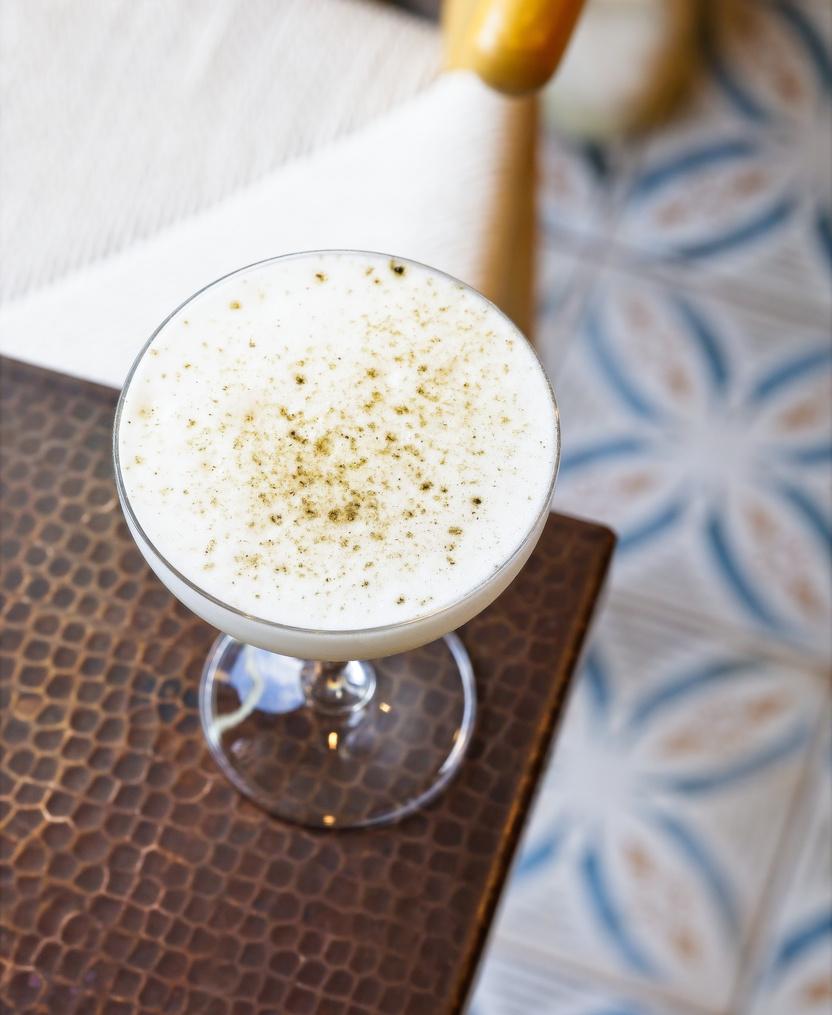
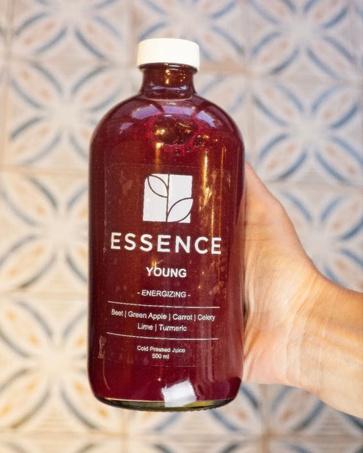
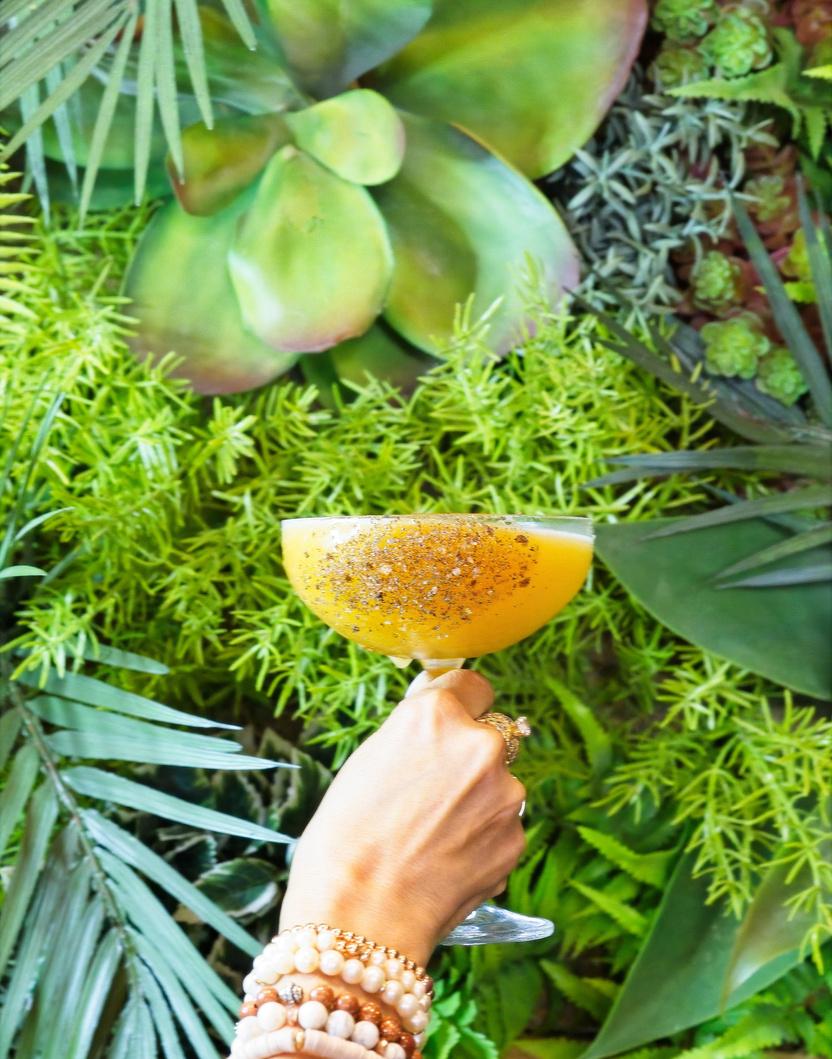

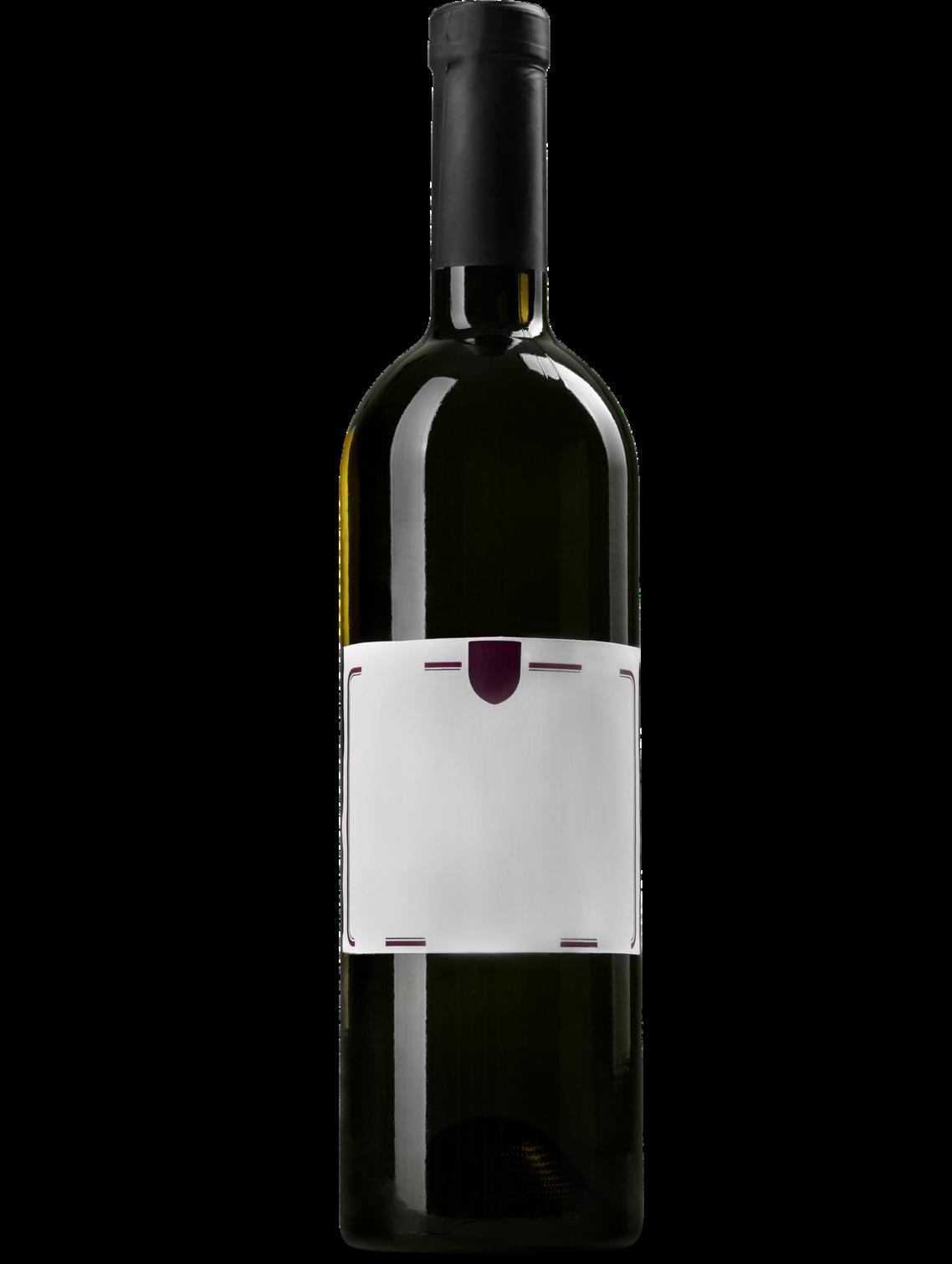
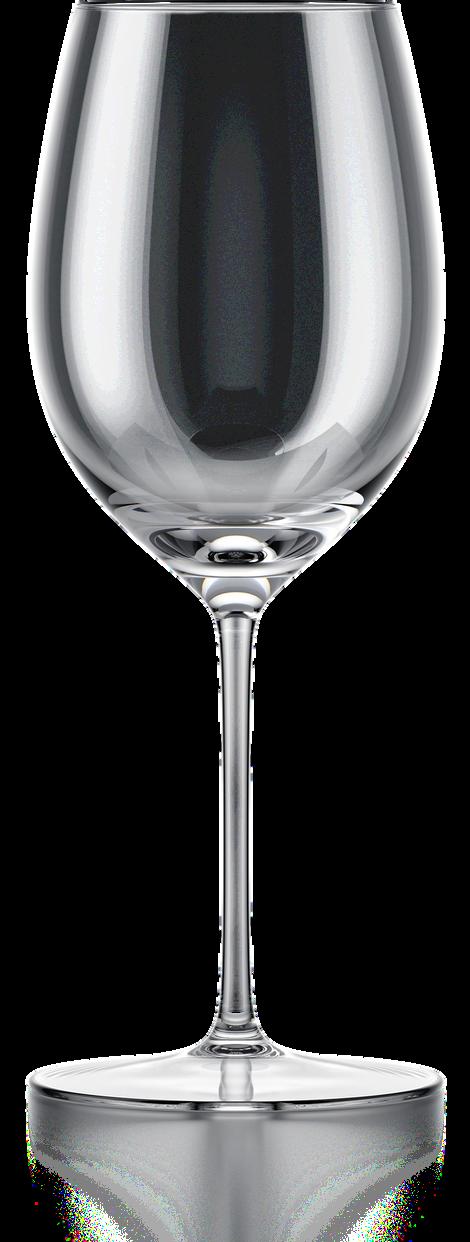



celebratingsignificantAlbumAnniversaries
Marvin Gaye's album "Let's Get It On" is a critically acclaimed and commercially successful R&B/soul album released in 1973. It is considered one of the greatest albums of all time and is often regarded as Gaye's masterpiece. Here are some key details about the album:

1. Concept and Themes: "Let's Get It On" is a sensual and romantic album that explores themes of love, desire, and sexuality. Gaye wanted to create an album that celebrated physical intimacy and connection between partners.
2. Musical Style: The album blends various musical styles, including soul, funk, and jazz influences. Gaye's smooth and seductive vocal delivery, layered harmonies, and lush instrumentation create a sensual and intimate atmosphere throughout the record.
3. Production and Collaborations: Gaye co-produced the album with Ed Townsend, and they worked together to craft the album's distinctive sound. The album features contributions from notable musicians like James Jamerson on bass, Eddie "Bongo" Brown on bongos, and several other talented session musicians.

celebratingsignificantAlbumAnniversaries
4. Title Track: The title track, "Let's Get It On," is the album's most famous and successful song. It became a massive hit, reaching number one on the Billboard Hot 100 chart. Its soulful melody, passionate lyrics, and seductive vocals made it an anthem for romantic encounters.
5. Commercial Success: "Let's Get It On" was a commercial triumph for Marvin Gaye. It was his second number one album on the Billboard 200 chart and his most successful release at the time, selling over three million copies in the United States alone.
6. Cultural Impact: The album broke barriers with its sexual themes and explicit lyrics, making it a groundbreaking work in the history of popular music. It played a crucial role in shaping the genre of soul music and influencing future artists.
7. Legacy: "Let's Get It On" is often regarded as one of the greatest albums ever made. It has received numerous accolades, including being named in Rolling Stone's list of the 500 Greatest Albums of All Time. The album continues to be celebrated for its timeless music and its impact on R&B and soul.
Let's Get It On" is a seminal work in Marvin Gaye's discography, showcasing his musical genius, his exploration of intimate themes, and his ability to create an album that resonates deeply with listeners.







It Will Always Be Caribana To Me
Caribana Festival, now known as the Toronto Caribbean Carnival, is an annual cultural festival held in Toronto, Canada. It is one of the largest Caribbean festivals in North America and showcases the vibrant culture, music, food, and traditions of the Caribbean community in Toronto.
The history of Caribana dates back to 1967 when Canada celebrated its centennial anniversary. At that time, the Caribbean community in Toronto wanted to showcase their rich cultural heritage and contribute to the festivities. Inspired by the Trinidad and Tobago Carnival, they organized a one-day Caribbean festival called Caribana.
The inaugural Caribana Festival took place on August 5, 1967, and attracted around 7,000 participants. It featured a parade, steelpan bands, calypso music, and vibrant costumes. The festival was an immediate success and became an annual event.
Over the years, Caribana grew in popularity and size, attracting participants and spectators from around the world. It became a platform for Caribbean communities to celebrate and share their cultural traditions, including music, dance, art, and cuisine.


It Will Always Be Caribana To Me
In the 1970s, the festival faced financial difficulties and struggled to sustain itself. To overcome this, the Caribana festival was transformed into a nonprofit organization called the Caribbean Cultural Committee (CCC) in 1976. This allowed the festival to secure funding and support from various government and corporate sponsors.
In 1991, the festival faced another setback when the organizers decided to focus on the celebration of Caribbean culture rather than the parade. This led to a split within the community, resulting in the establishment of a new festival called Scotiabank Caribbean Carnival Toronto.
In 2006, the festival underwent a rebranding and was officially renamed the Toronto Caribbean Carnival. It continued to grow and attract millions of visitors each year. The festival's signature event, the Grand Parade, became the highlight of the celebration, featuring colorful costumes, vibrant floats, and energetic music.
Today, the Toronto Caribbean Carnival spans over several weeks, featuring various events such as concerts, parties, cultural exhibitions, and of course, the iconic Grand Parade. It has become an integral part of Toronto's cultural landscape, celebrating the Caribbean diaspora and promoting diversity and inclusivity in the city.


TORONTO CARIBBEAN CARNIVAL
It Will Always Be Caribana To Me

King and Queen Showcase: Thursday August 3rd at Lamport Stadium
Aug 03, 5:00 p.m. EDT – Aug 04, 12:00 a.m. EDT
Lamport Stadium, 1151 King St W, Toronto, ON M6K 1E9, Canada
Pan Alive Panorama: Friday August 4th at Lamport Stadium
Aug 04, 5:30 p.m. – 10:30 p.m. EDT
Toronto, 1151 King St W, Toronto, ON M6K 1E9, Canada
The Grand Parade: Saturday August 5th along Lakeshore Blvd.
Aug 05, 8:00 a.m. – 8:00 p.m. EDT Lakeshore Blvd W & Exhibition Place , 115
Princes' Blvd, Toronto, ON M6K 3C3, Canada
TCC International Food Festival: Sunday August 6th at Malvern Park
Aug 06, 2:00 p.m. – 8:00 p.m. Malvern Park/Malvern Recreation Centre, 30
Sewells Rd, Scarborough, ON M1B 3G5, Canada
Pan in de Park: Sunday August 6th at Neilson Park
Aug 06, 2:00 p.m. – 9:00 p.m.
Malvern Park/Malvern Recrea
M1B 3G5, Canada

It Will Always Be Caribana To Me
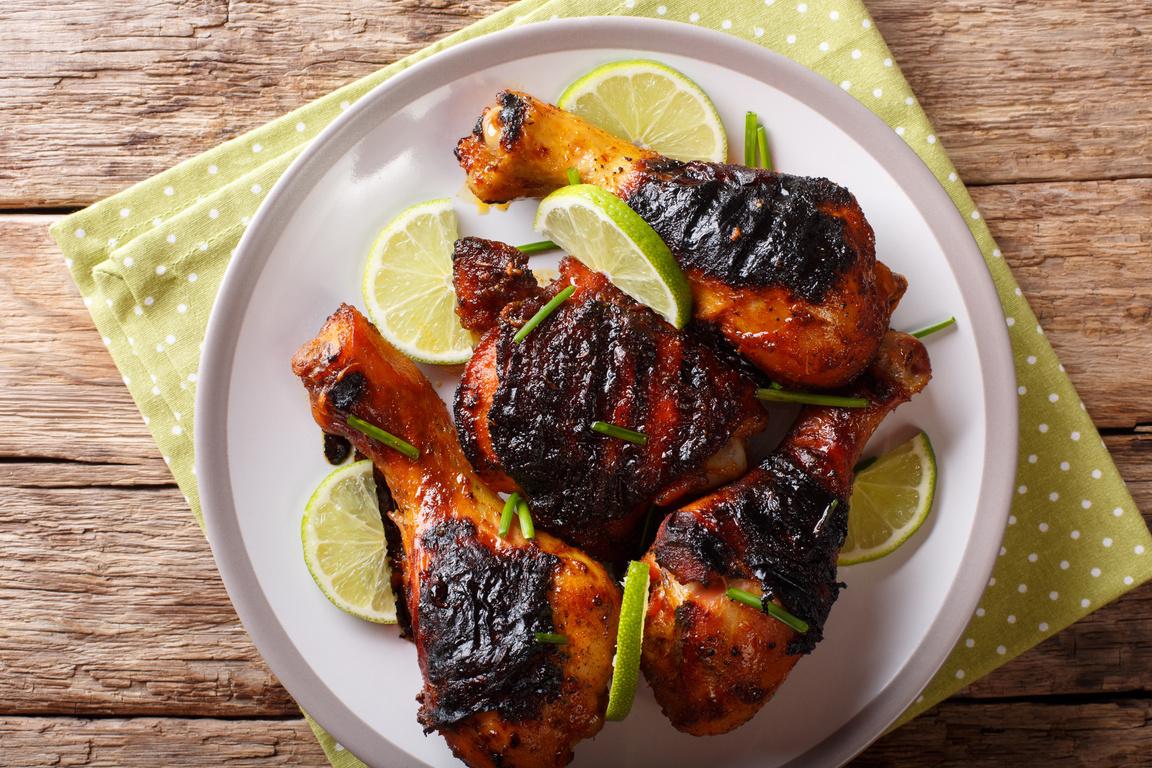
1.Inabowl,combine:allspice,brownsugar,thyme, blackpepper,paprika,garlicpowder,onionpowder, salt,andcayennepeppertomakethejerkseasoning.
2.Add:greenonions,mincedgarlic,gratedginger,soy sauce,vegetableoil,limejuice,andvinegartothe bowl.Mixwelltoformathickpaste.
4-6 chicken pieces (thighs or legs)
2 tbsps ground allspice
2 tbsps brown sugar
2 tbsps dried thyme
1 tbsp ground black pepper
1 tbsp paprika
1 tbsp garlic powder
1 tbsp onion powder
1 tbsp salt
1 tbsp cayenne pepper (adjust to desired spice level)
4 green onions, chopped
4 cloves garlic, minced
2 tbsps fresh ginger, grated
2 tbsps soy sauce
2 tbsps vegetable oil
2 tbsps lime juice
2 tbsps vinegar (preferably apple cider vinegar)
3.PlacethechickenpiecesinalargeZiplocbagora shallowdish.Pourthejerkmarinadeoverthechicken, ensuringthateachpieceiscoatedevenly.Massage themarinadeintothechicken,makingsureitreaches allthenooksandcrannies.Sealthebagorcoverthe dish,thenrefrigerateforatleast2hoursorpreferably overnight,toallowtheflavorstodevelop.
4.Preheatyourgrilltomedium-highheat(orpreheat yourovento400°F/200°Cifyouprefertobakethe chicken).
5.Removethechickenfromthemarinade,allowing anyexcesstodripoff.Reservethemarinadefor basting.
6.Grillthechickenoverdirectheatforabout6-8 minutesperside,oruntiltheinternaltemperature reaches165°F/75°C.Ifbaking,placethechickenona bakingsheetandbakeforapproximately30-35 minutes,oruntilfullycooked.
7.Whilegrillingorbaking,bastethechickenwiththe reservedmarinadeeveryfewminutestokeepitmoist andenhancetheflavors.
8.Oncecooked,removethechickenfromtheheat andletitrestforafewminutesbeforeserving.




Our name TNT Tabanca - Many ask where we got the name, so here's a quick breakdown.
TNT = TRINIDAD AND TOBAGO
Tabanca - has a few meanings however we use it to mean being lovesick for something like carnival or curry. The word ‘Tabanca’ used in many common phrases, on the island. Arun's love for home is his Tabanca.
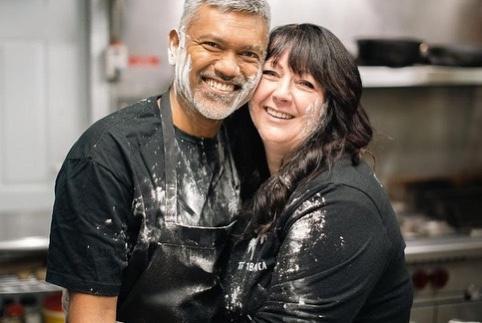
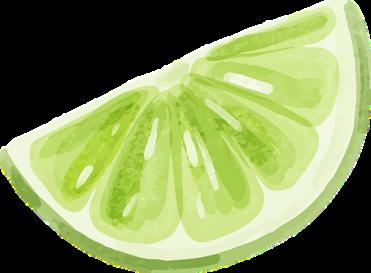

We offer the freshest Roti & Doubles as well as an array of other authentic Caribbean cuisine. 100% Halal, as well as, some Vegan/Vegetarian Options. Our recipes are a collection from Arun's family in the Southern part of Trinidad and a few little secrets from his Aunty Seema in Diego Martin, just down the street from Bobby's Bar.
Order in 3 steps: 1 - pick your roti. 2 - pick your protein. 3 - pick your spice level.
Bake and shark is a unique Trini street food item that is especially popular at concerts, festivals, and celebrations. It consists of marinated or seasoned pieces of shark meat, sauces, chutneys, and vegetables in a flatbread known as bake.
Doubles are Trinidad and Tobago's most famous street food and now the best in London, Ontario. A delicious & sloppy sandwich made with two pillowy soft baras (flat fried breads) stuffed with flavorful chickpeas and topped with a our inhouse chutneys.
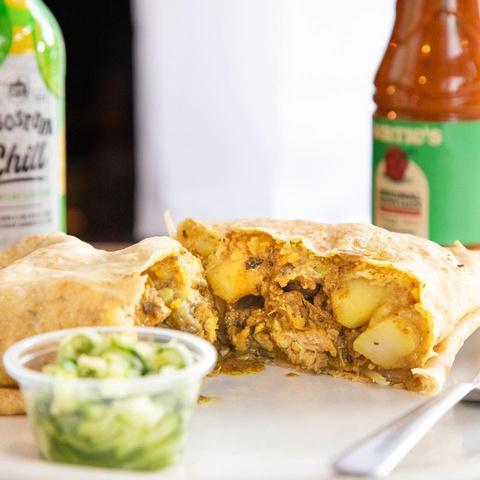
Island Fest is an unforgettable Caribbean party and experience, stirring-up London Ontario on Sat July 29th & Sun July 30th, at Covent Garden Market. The event was created by a group of local Caribbean entrepreneurs, with roots in Trinidad, Barbados and Jamaica, aiming to create an inclusive and authentic experience for all visitors. Indulge in traditional Caribbean cuisine hand-prepared by 10 local food vendors! Immerse yourself in the rhythms of the culture with sites & sounds of 10 live music shows, 5 DJs, 3 dance performances, spoken word, and even a fire-breather! Learn new things about the culture through storytelling. Feel good about supporting 11 local small businesses when you shop their artisanal wares at the festival. Try the brand new Island Fest lager with lime, alongside some rum punch, other delicious island beverages and unique Caribbean sweets. Family, loved-ones, best friends and even your fur babies are all welcome at this outstanding free admission celebration in downtown London!
Saturday July 29, 4-11PM and Sunday July 30, 11AM-7PM Outdoors at Covent Garden Market, 130 King St., London, Ontario.

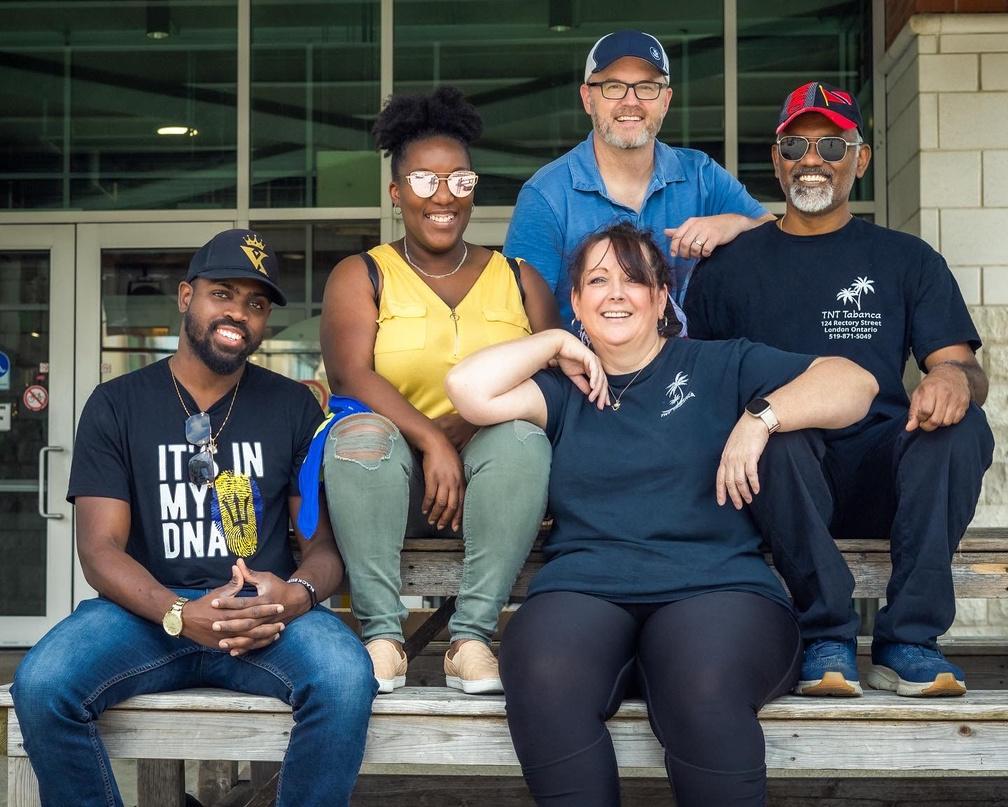


Trinidad and Tobago cuisine is a fusion of African, Indian, Chinese European, and indigenous influences. The history of Trinidad and Tobago cuisine is deeply rooted in the country's colonial past and the diverse groups of people who have settled on the islands.

Indigenous peoples, such as the Arawaks and Caribs, inhabited Trinidad and Tobago before the arrival of European colonizers. They relied on fishing, farming, and gathering wild foods for sustenance. Some indigenous culinary practices have influenced the current cuisine of Trinidad and Tobago, such as the use of cassava and various local fruits and vegetables.
The arrival of Europeans, mainly the Spanish, in the late 15th century brought new ingredients and cooking techniques to the islands. Spanish colonizers introduced crops like corn, cassava, and peppers, which became integral to the local cuisine. However, Spanish influence on Trinidad and Tobago cuisine was relatively short-lived, as the islands were later colonized by the British.
The British colonization of Trinidad and Tobago began in the late 18th century and lasted until the country gained independence in 1962. During this period, African slaves were brought to the islands to work on sugar cane plantations. The African slaves brought with them their culinary traditions, including various cooking methods and the use of ingredients like okra, callaloo (similar to spinach), and various spices. The African influence on Trinidad and Tobago cuisine is particularly evident in dishes such as callaloo, pelau (a one-pot dish with meat, rice, and pigeon peas), and the use of various spices in local cooking.



In the 19th century, indentured laborers from India were brought to Trinidad and Tobago to work on plantations after the abolition of slavery. These Indian immigrants brought with them their own culinary traditions, including curries, rotis, and various spice blends. Indian cuisine has had a significant impact on Trinidad and Tobago's culinary landscape, with dishes like doubles (a popular street food consisting of fried flatbread filled with curried chickpeas) and various types of rotis becoming staples.
Chinese immigrants also came to Trinidad and Tobago in the late 19th and early 20th centuries, bringing their culinary traditions with them. Chinese cuisine has influenced Trinidad and Tobago's food culture, with dishes like fried rice, chow mein, and various types of stir-fried dishes being incorporated into the local cuisine.
In addition to these major influences, Trinidad and Tobago cuisine has also been shaped by other immigrant groups, such as Syrians, Lebanese, and Portuguese, who introduced their own flavors and dishes to the islands.
Today, Trinidad and Tobago cuisine is a vibrant fusion of these diverse influences. The country's culinary scene is known for its bold flavours, use of spices, and diverse range of dishes. Popular Trinidad and Tobago dishes include: roti, curry, jerk chicken, bake and shark (a sandwich made with fried shark meat), doubles, pelau, and callaloo.




A sandwich is a quintessential food item that has become an integral part of our daily lives. It is a simple yet versatile creation that combines various ingredients between two slices of bread, making it a convenient and satisfying meal option. While its origins can be traced back to several ancient cultures, the modern-day sandwich, as we know it today, has a fascinating history filled with innovation, creativity, and cultural influences.
The concept of placing food between bread dates back thousands of years. The ancient Egyptians are believed to be among the first to embrace this idea, utilizing flatbread as a vessel for various fillings. Similarly, the Jewish people have a long-standing tradition of using unleavened bread, such as matzo, to enclose ingredients like meat or bitter herbs during Passover.
John Montagu, the Earl of Sandwich:
The sandwich, as we know it, owes its name and popularity to John Montagu, the 4th Earl of Sandwich, an 18th-century English aristocrat. Legend has it that the Earl was a passionate gambler who disliked interrupting his card games for meals. As a solution, he requested his servants to place slices of cold meat between two pieces of bread. This allowed him to conveniently eat without using utensils, thus giving birth to the "sandwich."
The Earl's culinary innovation quickly gained popularity, spreading throughout England and beyond. Workers, sailors, and travelers embraced the sandwich as a portable and nourishing meal. It became a staple in British pubs, with various fillings like roast beef, ham, cheese, and pickles.

In the 19th century, the sandwich made its way to the United States. Immigrants brought their own variations, introducing new flavors and ingredients. The iconic Reuben sandwich, a combination of corned beef, Swiss cheese, sauerkraut, and Russian dressing, originated in New York City. Meanwhile, in Philadelphia, the famous cheesesteak sandwich emerged, featuring thinly sliced steak, melted cheese, and onions.
As the sandwich's popularity grew, different cultures began inventing their own versions. In Mexico, the torta features a variety of fillings such as avocado, refried beans, and different types of meat. In Vietnam, the banh mi showcases a fusion of French and Asian flavors, combining ingredients like pickled vegetables, cilantro, and grilled meats in a baguette.
In recent decades, the sandwich has experienced a renaissance, with chefs and home cooks pushing the boundaries of creativity. Gourmet sandwiches have emerged, featuring artisanal bread, unique spreads, and inventive combinations of ingredients. Health-conscious individuals have embraced open-faced sandwiches, using lighter bread options and incorporating fresh vegetables.
From its humble beginnings as a convenient gambling meal, the sandwich has evolved into a global culinary phenomenon. It has transcended cultural boundaries, adapting and incorporating flavors from various cuisines. Today, the sandwich remains a beloved and accessible option for people of all walks of life, offering endless possibilities for delicious and satisfying combinations. Whether you prefer a classic BLT or modern avocado toast, the sandwich continues to be a timeless and versatile culinary creation.

1. BLT (Bacon, Lettuce, and Tomato): A classic American sandwich featuring crispy bacon, fresh lettuce, and ripe tomatoes, often served with mayo on toasted bread.
2. Club Sandwich: Another American creation, consisting of layers of roasted turkey or chicken, bacon, lettuce, tomato, and mayo, usually served on three slices of toasted bread.
3. Reuben: A beloved deli sandwich in the United States, typically made with corned beef, Swiss cheese, sauerkraut, and Russian dressing, grilled between slices of rye bread.
4. Bánh mì: A Vietnamese sandwich that combines French and Asian flavors, featuring a baguette filled with various ingredients like grilled meat (often pork), pickled vegetables, cilantro, and mayonnaise.
5. Croque Monsieur: A French sandwich made with ham, Gruyère or Emmental cheese, and béchamel sauce, then grilled or baked until golden and crispy.
6. Cubano: A traditional Cuban sandwich consisting of roasted pork, ham, Swiss cheese, pickles, and mustard, pressed between slices of Cuban bread.
7. Pastrami on Rye: An iconic Jewish-American sandwich comprised of thinly sliced, highly seasoned pastrami meat, usually served on rye bread with mustard.
8. Falafel: A Middle Eastern sandwich made with deep-fried chickpea fritters (falafel), served in pita bread with various toppings like hummus, tahini sauce, salad, and pickles.
9. Shawarma: A popular Middle Eastern street food, typically made with thinly sliced marinated meat (chicken, beef, or lamb), served in pita bread with garlic sauce, tahini, and vegetables.
10. Croque Madame: A variation of the Croque Monsieur, this French sandwich adds a fried or poached egg on top of the ham and cheese, making it even more indulgent.
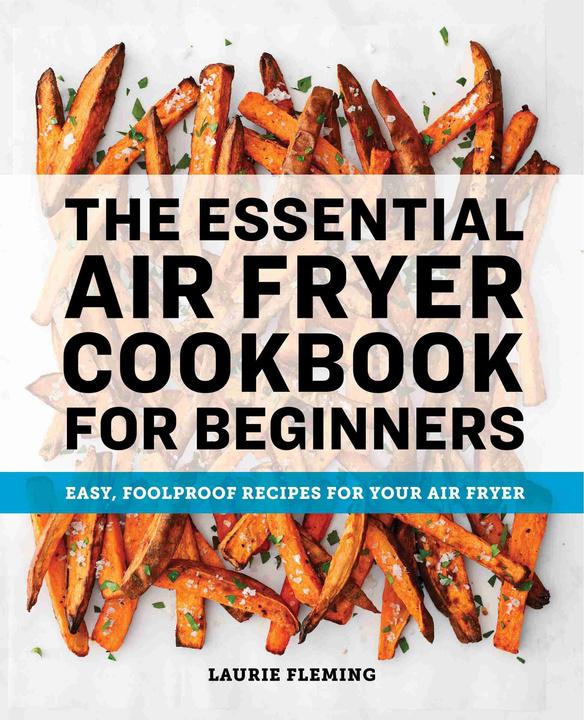


Egg rolls are a classic appetizer, but they can be time consuming to make. With an air fryer, you can make delicious egg rolls in minutes! These Pad Thai chicken egg rolls are especially tasty.
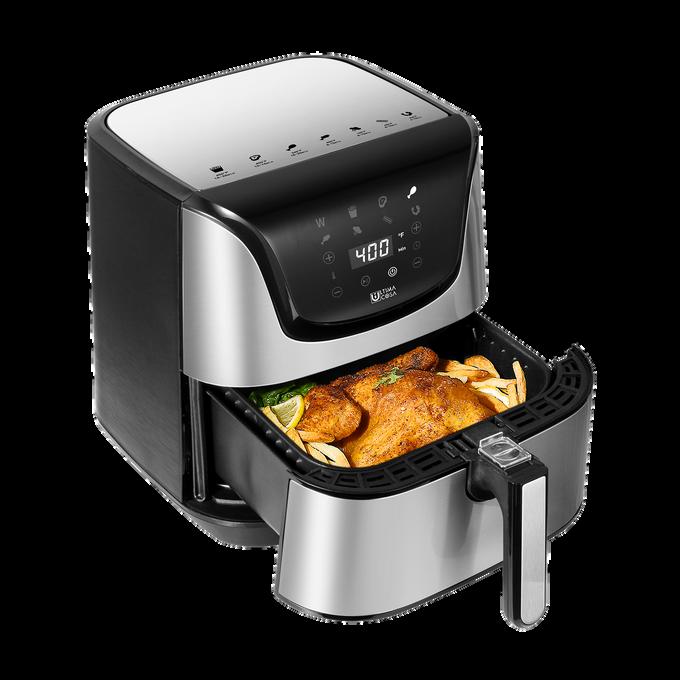


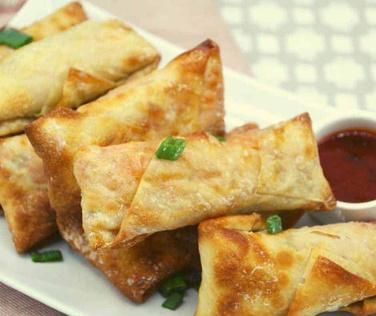

1.

Ingredients
2 cups shredded
chicken
1/2 cup Pad Thai Sauce
1 large red bell pepper
thinly sliced
2 large scallions diced
12-16 large egg roll
wrappers
Servings: 16 Servings
Calories: 63 kcal
3.

4.
In a large mixing bowl, mix the shredded chicken and the Pad Thai Sauce
Use a pastry brush or your finger, wet the wrapper's edges, and then put about 2 to 3 tablespoons of filling in the center of the egg roll wrapper. Add a couple of slices of red bell pepper and a few scallions slices. Fold the egg roll by folding it, overwrapping the filling. Spray the air fryer basket with cooking spray, and then place the egg rolls into the air fryer basket. Set the temperature to 350 degrees F for 5-6 minutes.
5.
Plate, serve, and enjoy!



Khao Tom: A Delightful Thai Breakfast Dish
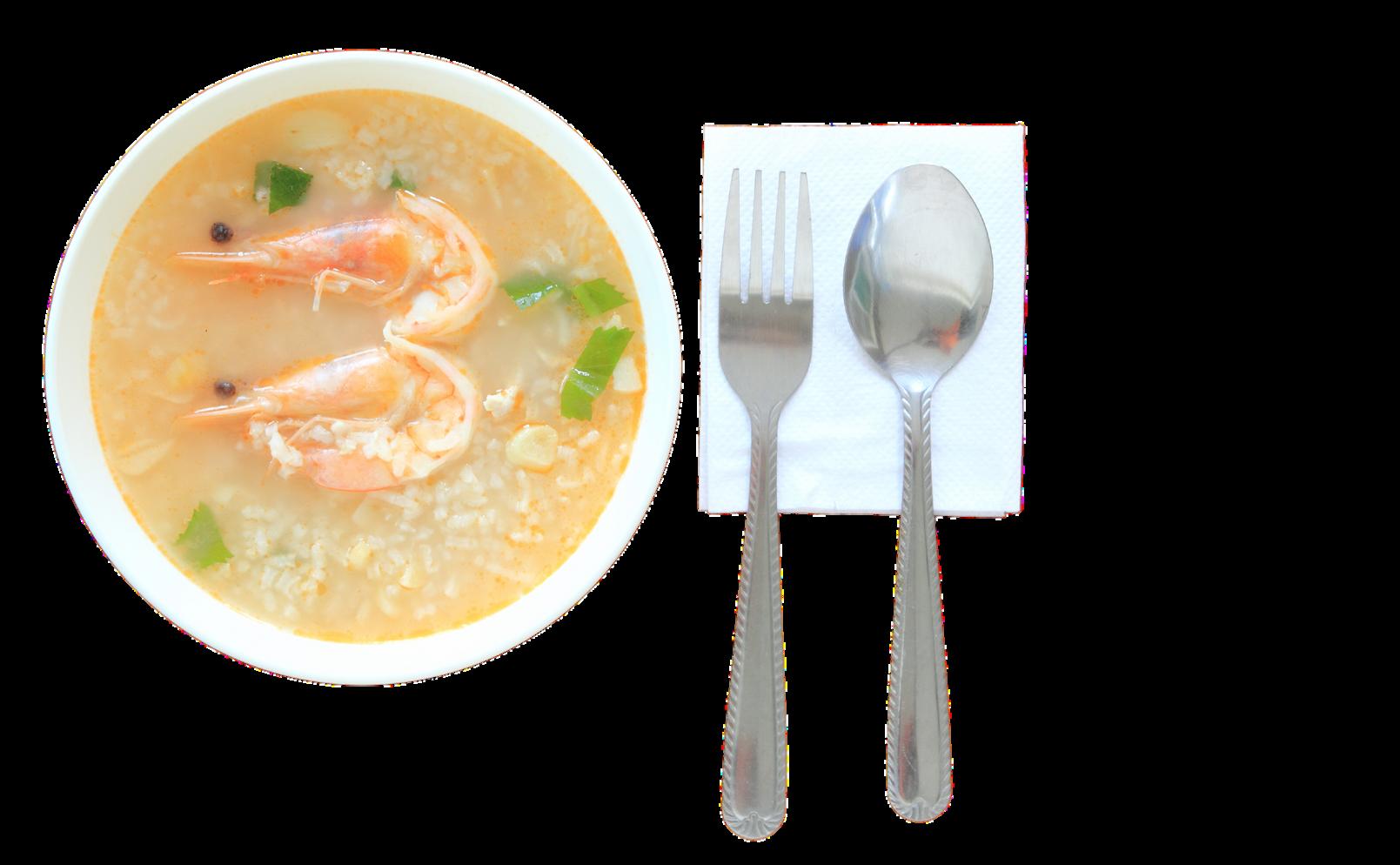
When it comes to Thai cuisine, the flavors and aromas of their dishes never fail to tantalize the taste buds. Among the many delectable culinary creations, Khao Tom stands out as a popular and beloved Thai breakfast dish. This warm and comforting rice soup has been a breakfast staple in Thailand for generations, offering a satisfying and nourishing start to the day. Let's dive into the origins, preparation, and flavors of this delightful Thai breakfast dish.
Khao Tom, which translates to "boiled rice," has its roots in Chinese cuisine. It was introduced to Thailand by Chinese immigrants and has since become an integral part of Thai food culture. Traditionally, Khao Tom was consumed not only for breakfast but also as a light meal throughout the day. It holds a special place in Thai households, where it is often prepared with love and care, passed down through generations.

Khao Tom: A Delightful Thai Breakfast Dish
Preparation:
Khao Tom is a simple yet versatile dish that can be prepared in various ways depending on personal preferences and regional influences. The essential ingredients include rice, broth, and a combination of proteins, vegetables, and aromatic herbs. The dish's adaptability allows for a wide range of flavours and textures, making it an ideal dish for customization.
To prepare Khao Tom, Thai jasmine rice is cooked with an ample amount of water or broth until it becomes soft and porridge-like. The choice of broth, whether chicken, pork, or vegetable, adds depth and richness to the dish. The proteins can vary, with chicken, pork, shrimp, or even fish balls being popular options. The addition of ginger, garlic, spring onions, and coriander enhances the aromatic profile of the dish, elevating it to new heights of deliciousness.
Flavour Profile and Accompaniments:
The flavours of Khao Tom are often described as comforting, subtle, and balanced. The delicate flavours of the rice and broth are enhanced by the fragrant herbs and spices, creating a harmonious blend. The addition of proteins and vegetables adds texture and depth to the dish.

Khao Tom: A Delightful Thai Breakfast Dish
To further elevate the taste, Khao Tom is often accompanied by a variety of condiments and side dishes. These can include chili sauce, soy sauce, fish sauce, lime juice, crispy fried garlic, fried shallots, and fresh herbs such as cilantro and Thai basil. These condiments allow each individual to personalize their bowl of Khao Tom according to their preferences.
Khao Tom, the beloved Thai breakfast dish, embodies the essence of Thai cuisine: simplicity, versatility, and incredible flavors. Its cultural significance and adaptability have made it a cherished part of everyday life for many Thai people. Whether enjoyed as a nourishing breakfast or a light meal throughout the day, Khao Tom offers a comforting and satisfying experience that is a must-try for anyone exploring Thai cuisine. So, if you find yourself in Thailand, don't miss the chance to savour this delightful rice soup and experience a taste of authentic Thai breakfast culture.


1 cup jasmine rice
4 cups water
2 cloves garlic, minced
1 tbsp vegetable oil
1 tbsp soy sauce
1 tsp fish sauce
4-6 small dried shrimp, soaked in warm water (optional)
2 green onions, thinly sliced
Fresh cilantro leaves, for garnish
White pepper, to taste Salt, to taste
1. Rinse the jasmine rice under cold water until the water runs clear. Drain well.
2. In a medium-sized pot, heat the vegetable oil over medium heat. Add the minced garlic and cook until fragrant, about 1 minute.
3. Add the drained rice to the pot and stir well to coat the rice with the garlic and oil.
4. Add the water to the pot and bring it to a boil. Once boiling, reduce the heat to low and let it simmer for about 30 minutes, or until the rice is cooked and has a porridge-like consistency. Stir occasionally to prevent sticking to the bottom of the pot.
5. While the rice is cooking, drain the soaked dried shrimp (if using) and finely chop them.
6. After the rice has cooked for about 30 minutes, add the chopped dried shrimp, soy sauce, fish sauce, and a pinch of salt to the pot. Stir well and let it simmer for an additional 5-10 minutes.
7. Taste the Khao Tom and adjust the seasoning with salt and white pepper. You can also add more soy sauce or fish sauce according to your preference.
8. Serve the Khao Tom hot, garnished with sliced green onions and fresh cilantro leaves.
JAMESBEARDAWARDWINNER•TheacclaimedchefbehindtheMichelinstarredMisterJiu’srestaurantsharesthepast,present,andfutureofChinese cookinginAmericathrough90mouthwateringrecipes.

ONEOFTHETENBESTCOOKBOOKSOFTHEYEAR:TheNewYorker,San FranciscoChronicle•ONEOFTHEBESTCOOKBOOKSOFTHEYEAR:Glamour• “BrandonJew’saffectionforSanFrancisco’sChinatownandhisownChinese heritageispalpableinthiscookbook,whichisbotharecipecollectionanda portraitofadistrictrichinhistory.” FuchsiaDunlop,JamesBeardAwardwinningauthorofTheFoodofSichuan
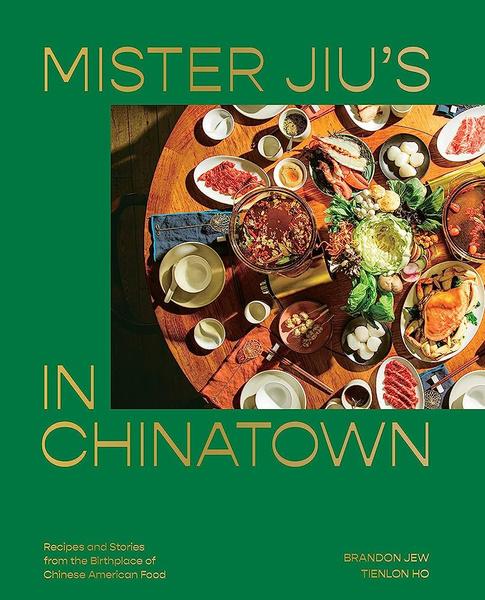

‘Mister Jiu's in Chinatown’ is a cookbook written by Brandon Jew and Tienlon Ho, which features recipes inspired by traditional Chinese cuisine. The book has a collection of over 90 recipes that reflect the flavors and techniques of Cantonese and Shanghainese cooking.
The book also tells the story of Brandon Jew, who is a Chinese-American chef and restaurateur. He grew up in San Francisco's Chinatown and has been working in the culinary industry for over 20 years. The book describes his journey to opening his restaurant, Mister Jiu's, in Chinatown.
The recipes in the book range from classic Chinese dishes, such as kung pao chicken and hot and sour soup, to modern interpretations, such as egg tarts with Meyer lemon curd and char siu pork belly bao. The recipes also include a range of techniques, such as stir-frying, braising, and steaming.
‘Mister Jiu's in Chinatown’ is a cookbook that not only provides delicious recipes but also tells the story of a chef's journey to creating a restaurant that honours the traditions of Chinese cuisine while also incorporating modern techniques and flavors.

~65,000
~270,000 food bank visits in March 2023
245,000

600,000
$1.5 M

Editor-in-chief Ken Berry
Creative Director
Senior Editor
Contributing Editor Content Researcher
Contributing Writer
Contributing Content
Recipe Contributer
Ken Berry
Linda Ross
Annalle Ramos-Berry
Ken Berry
Artie Telman
Ravi Notlimah
Chef Emily Zhuang
#eatsandbeatsmonthly | @eatsandbeatsmonthly
This is a not for profit digital magazine with 100% of net proceeds being donated to the Daily Bread Food Bank to help those with food insecurities